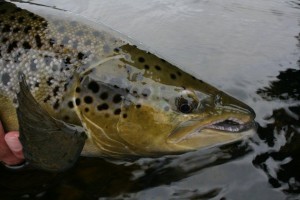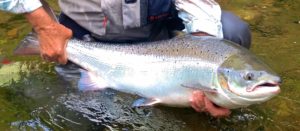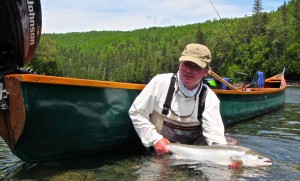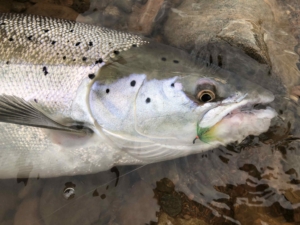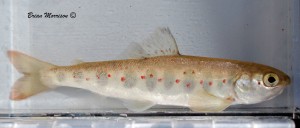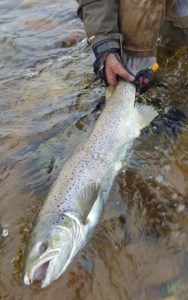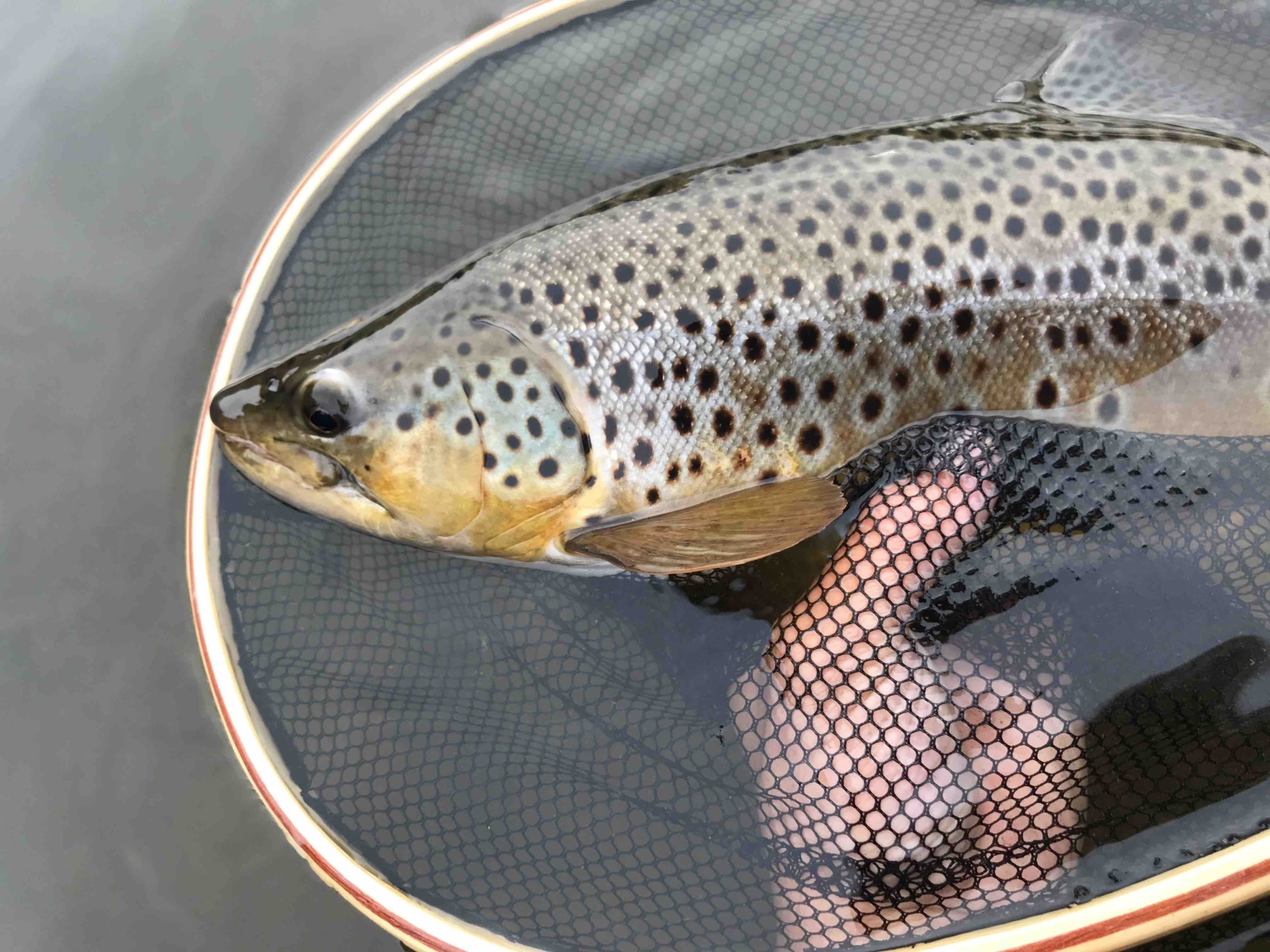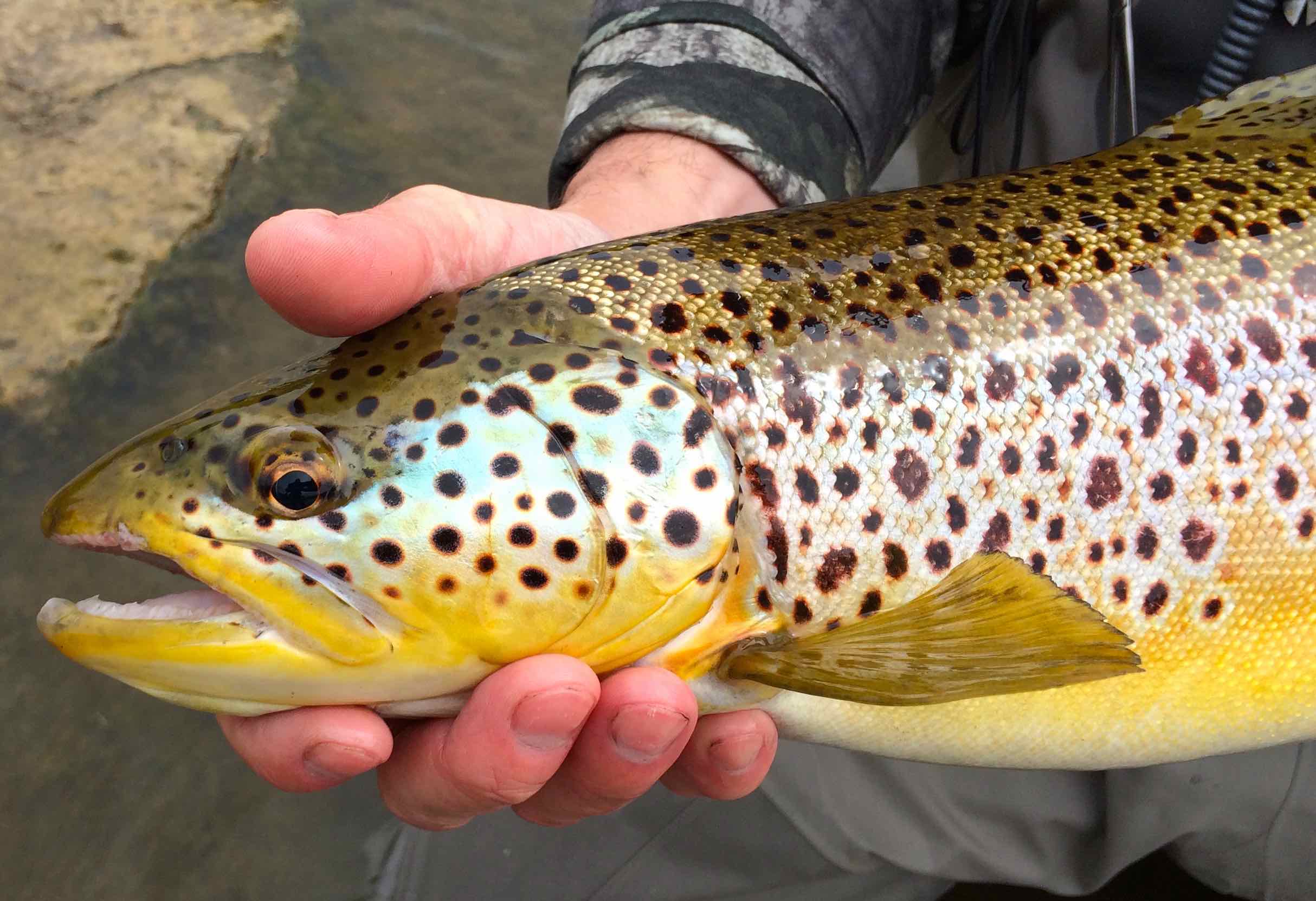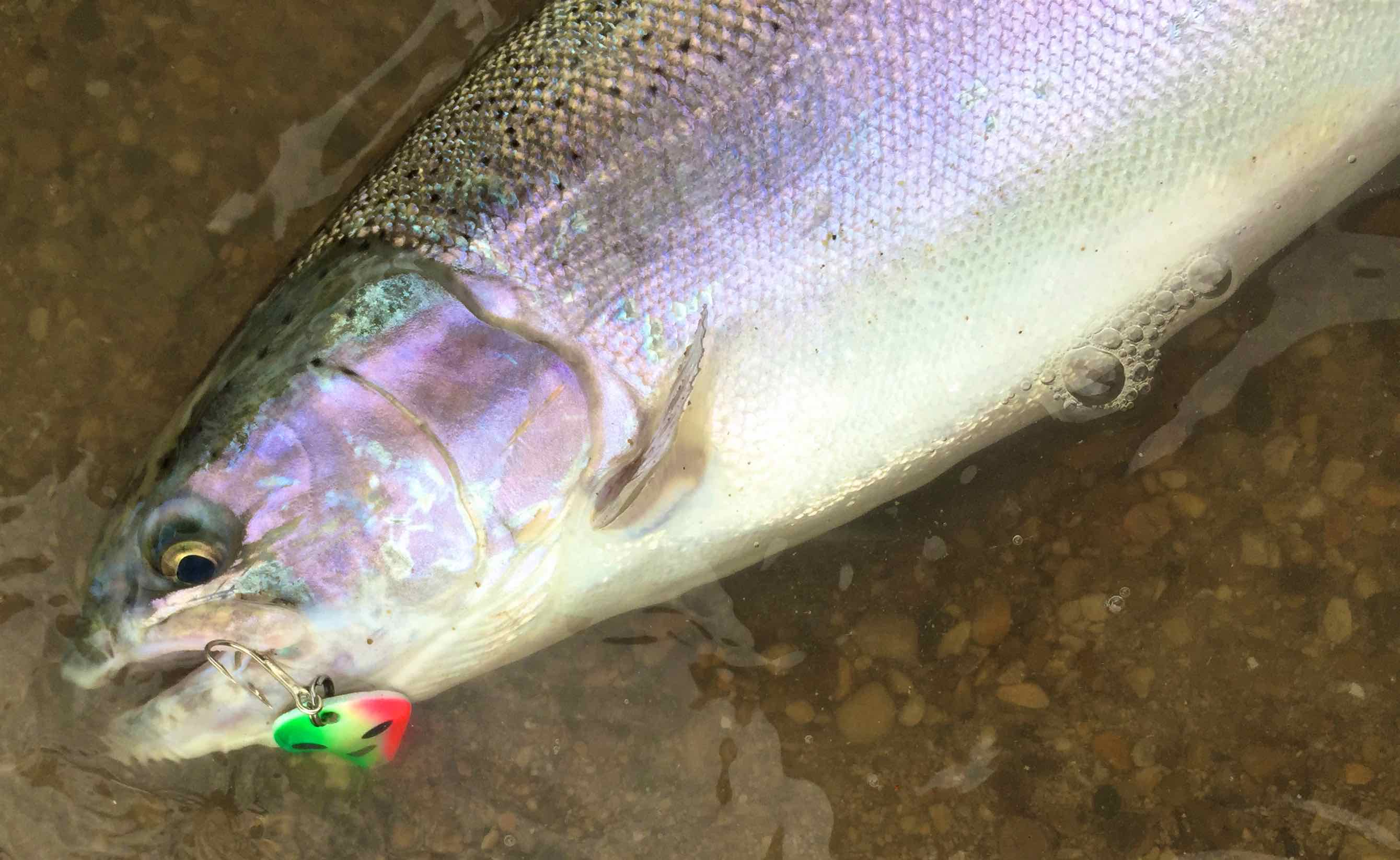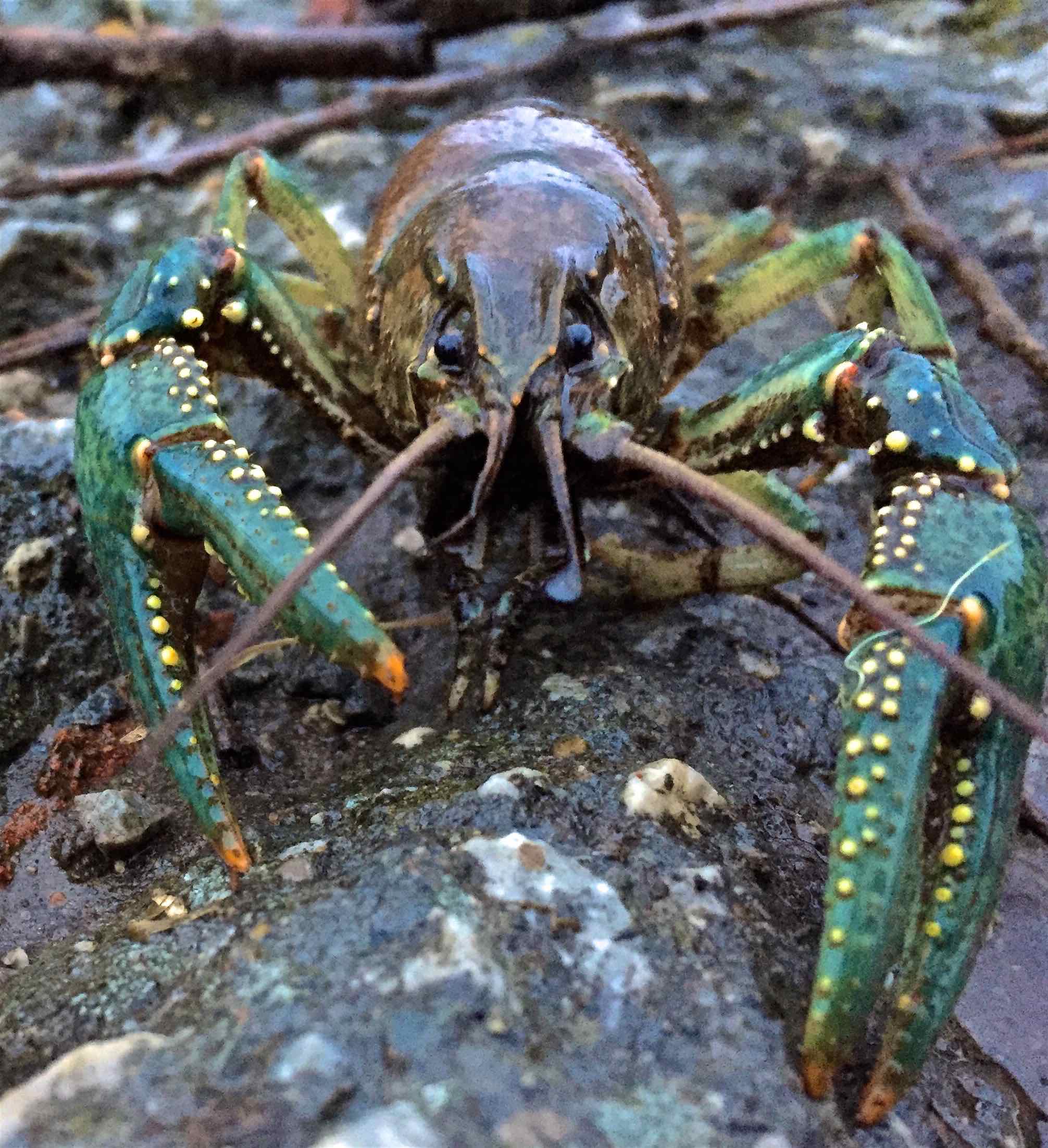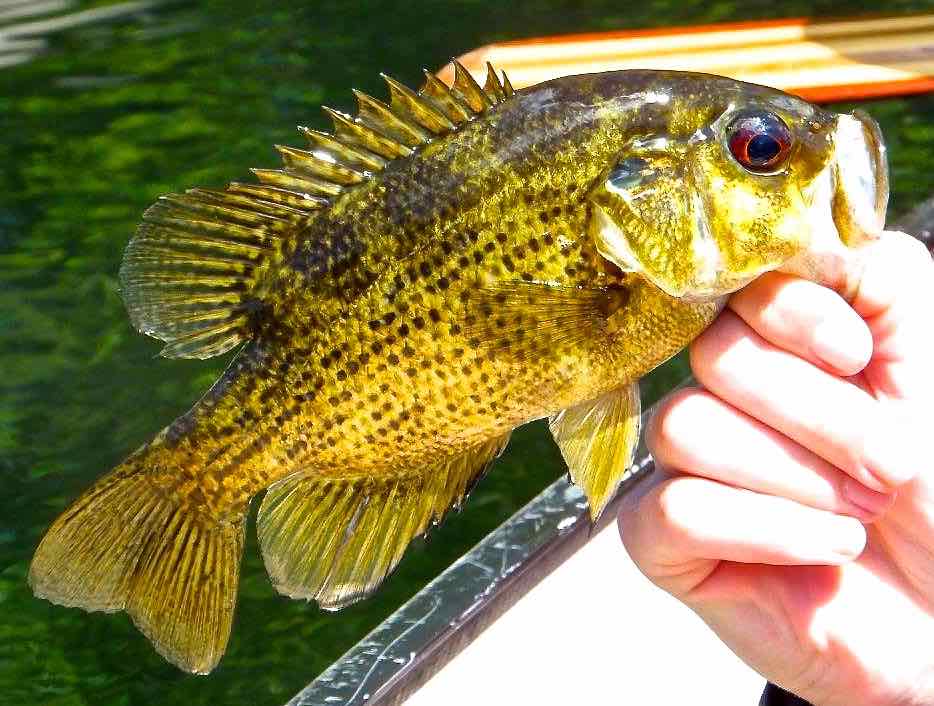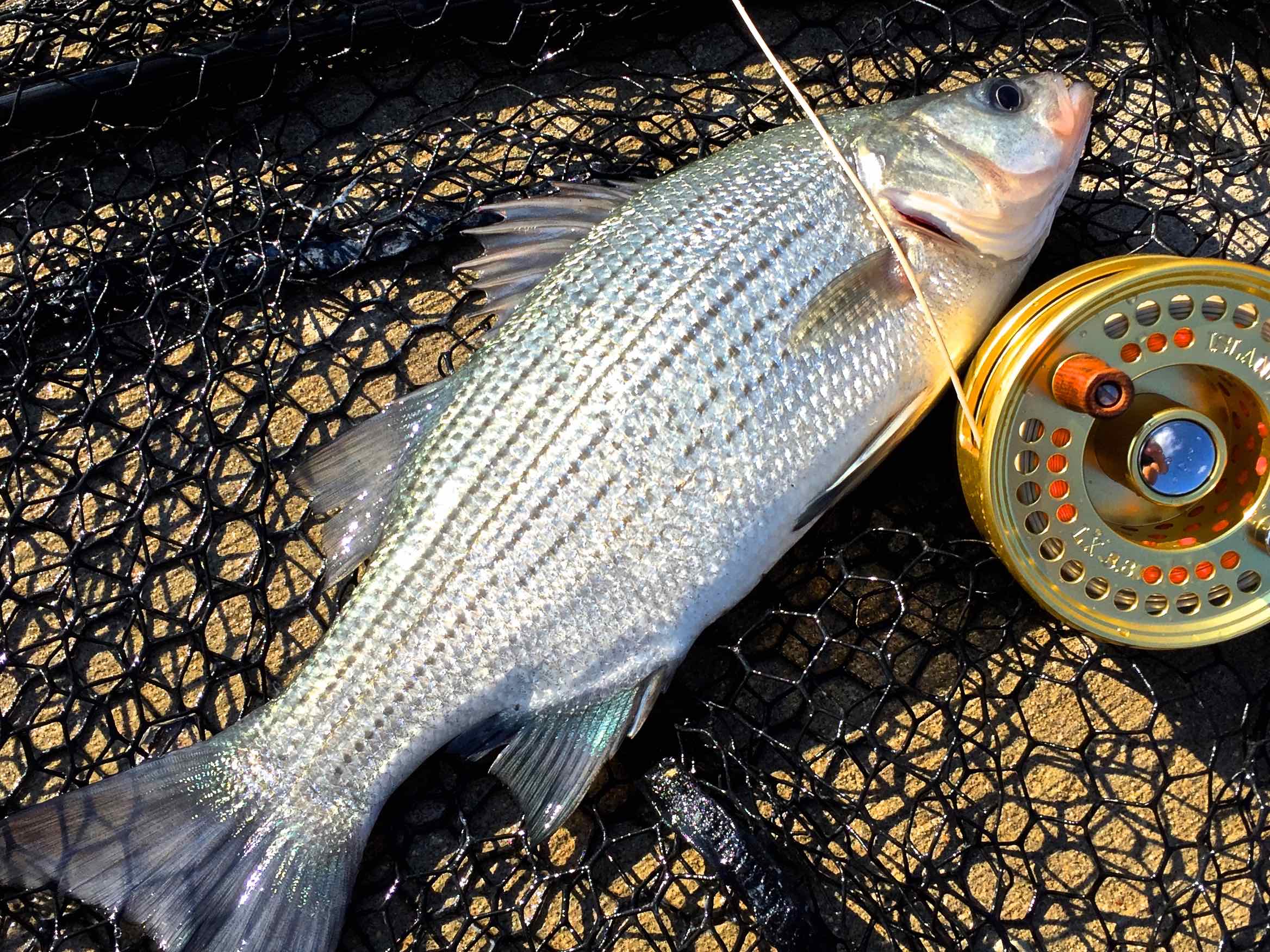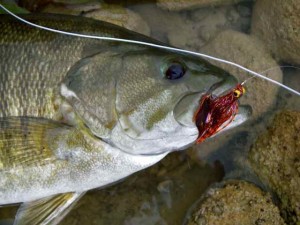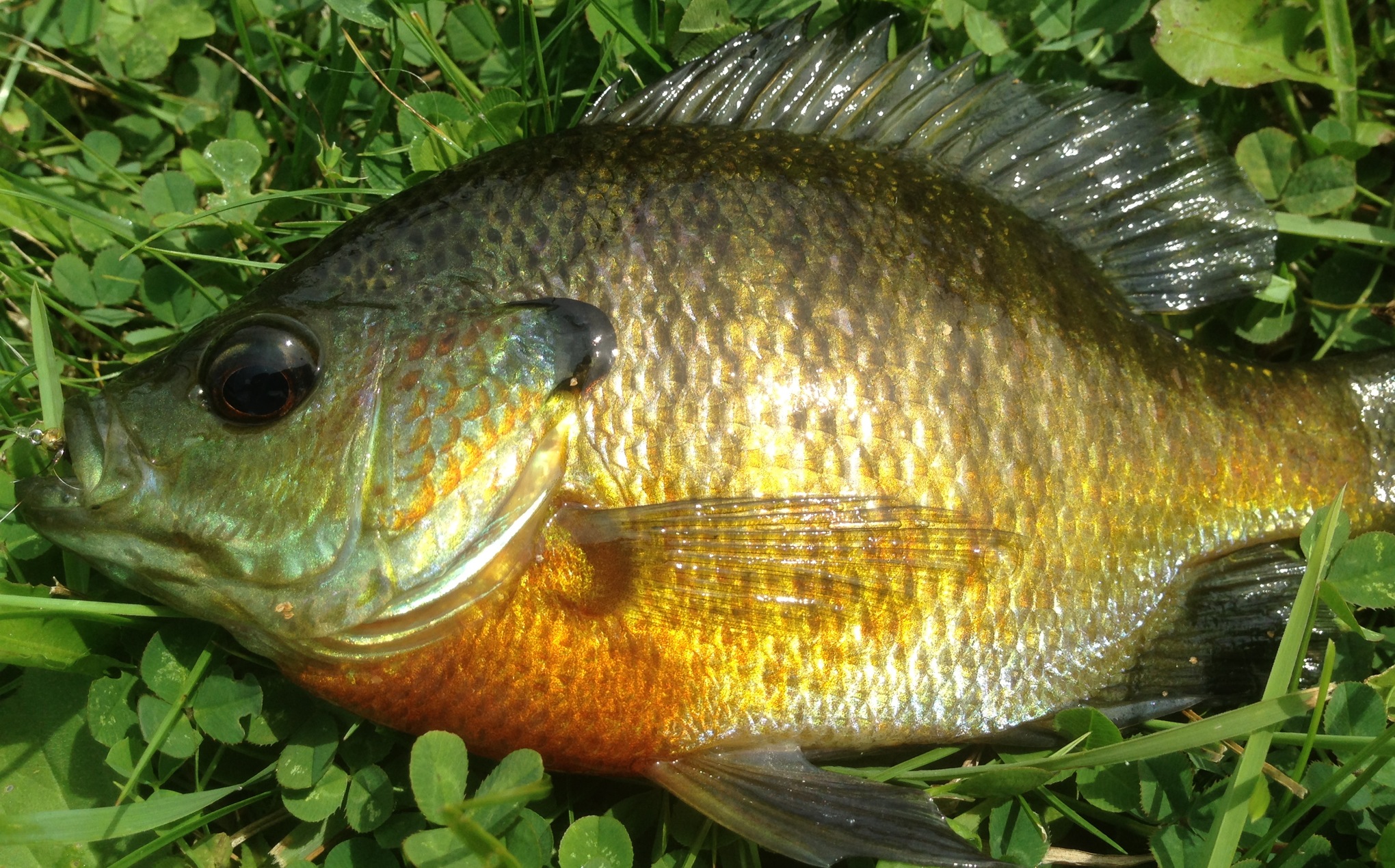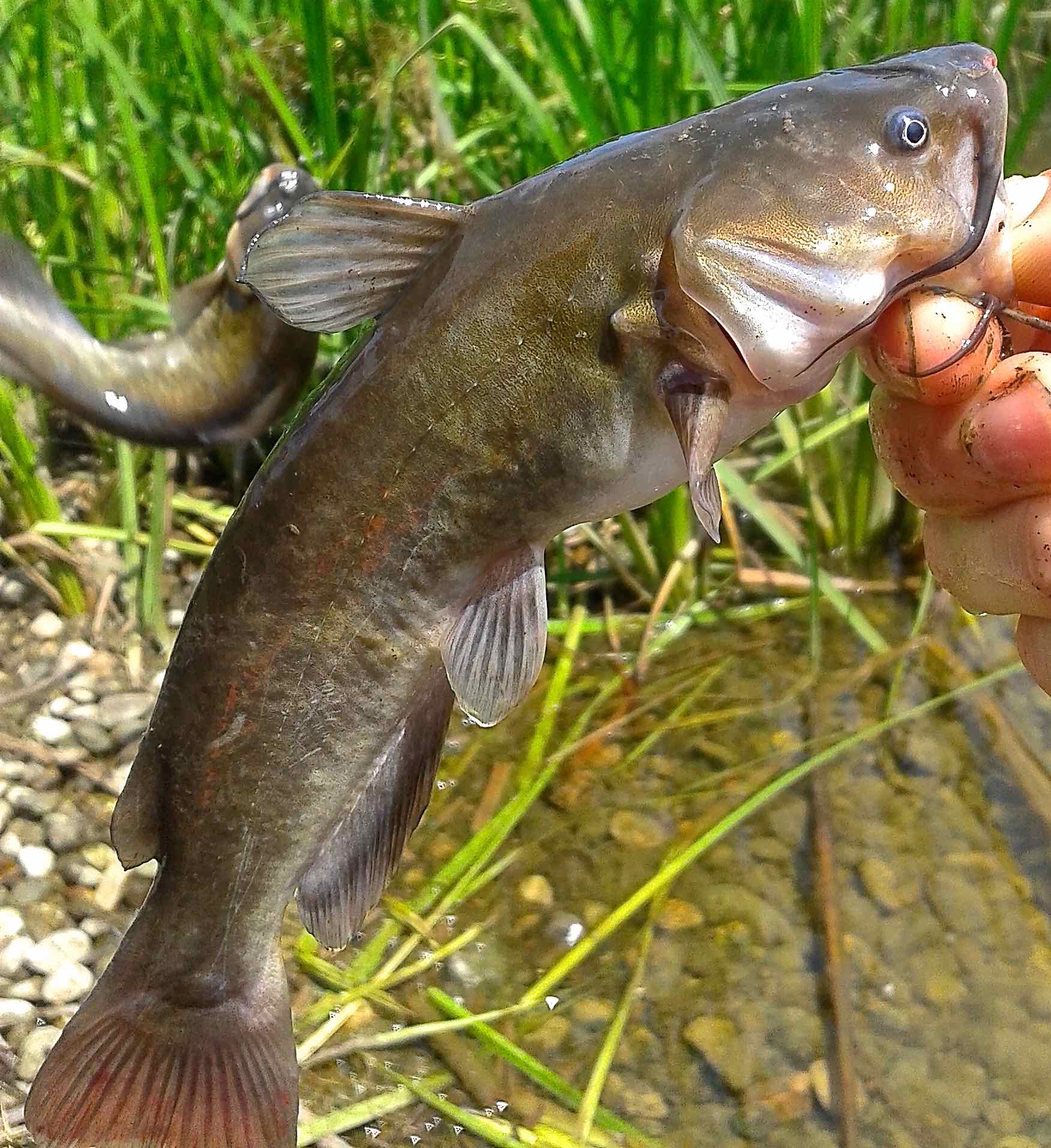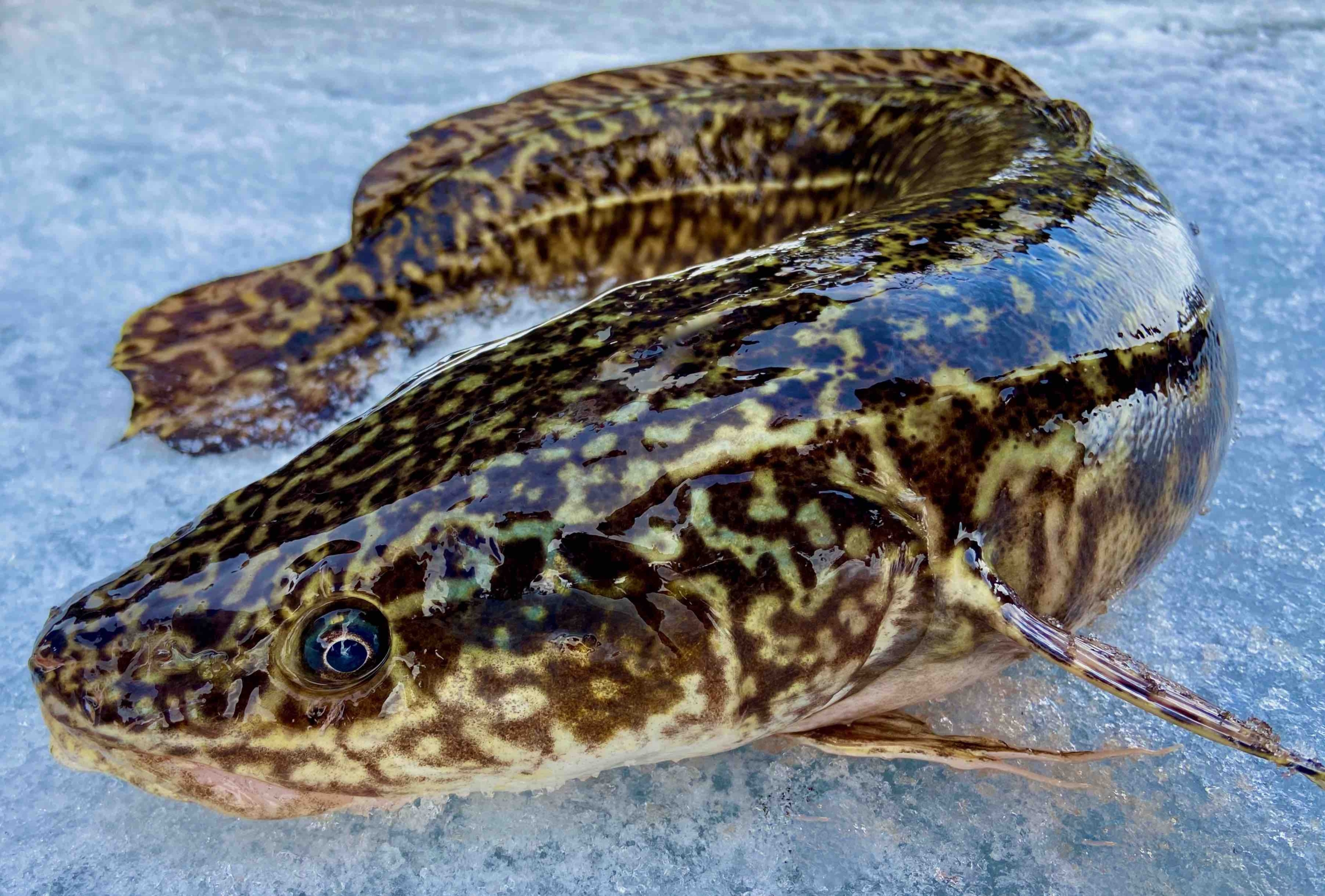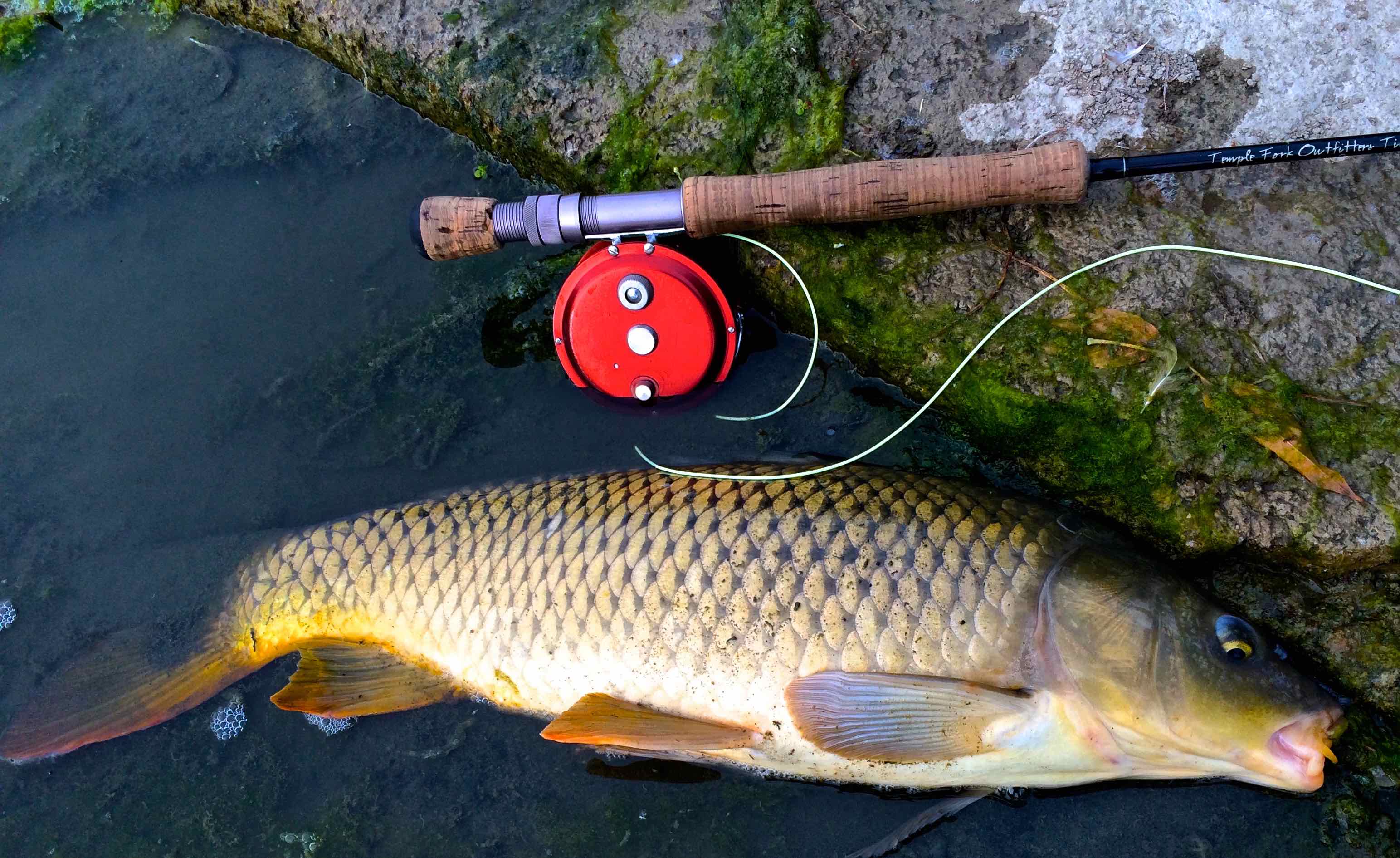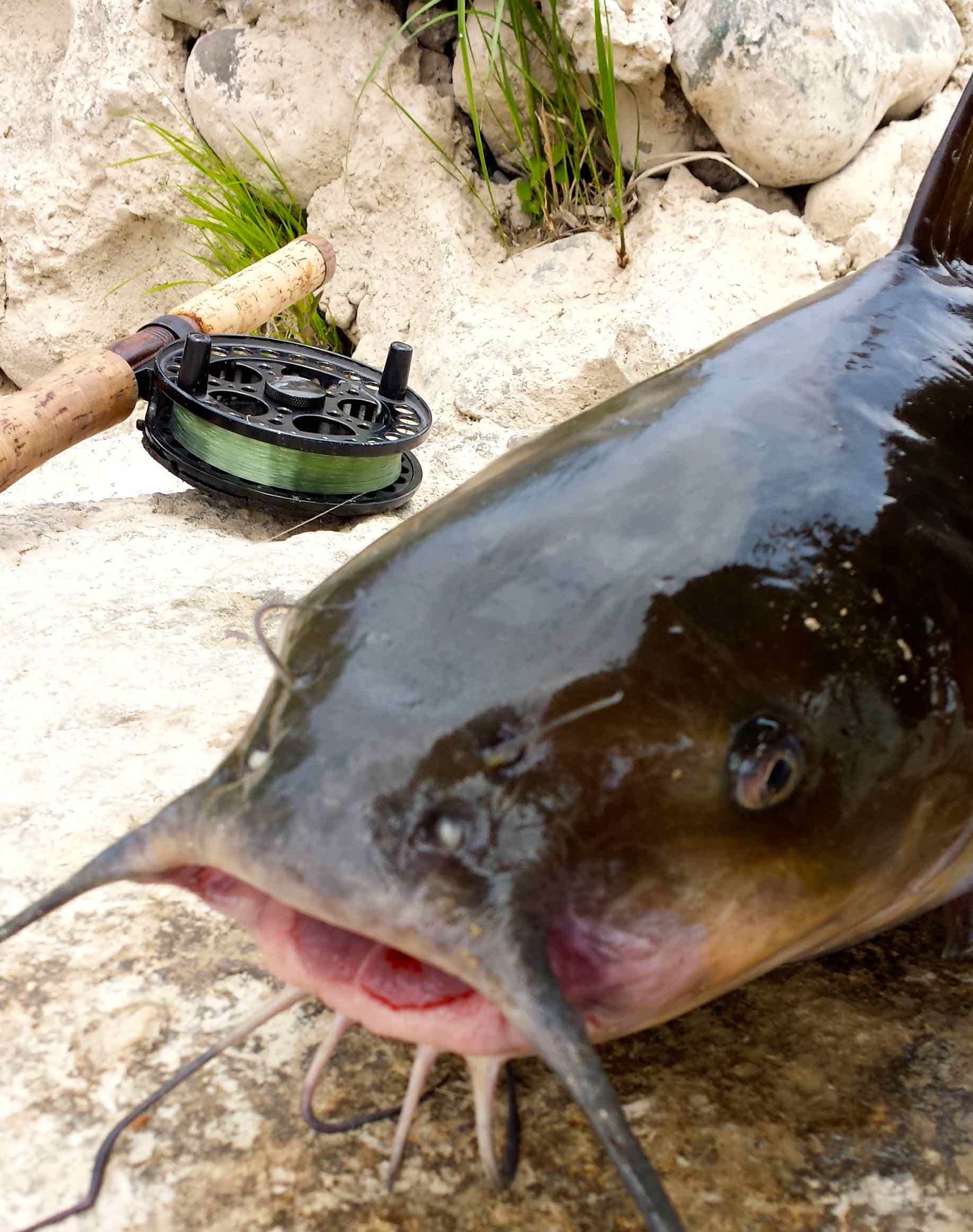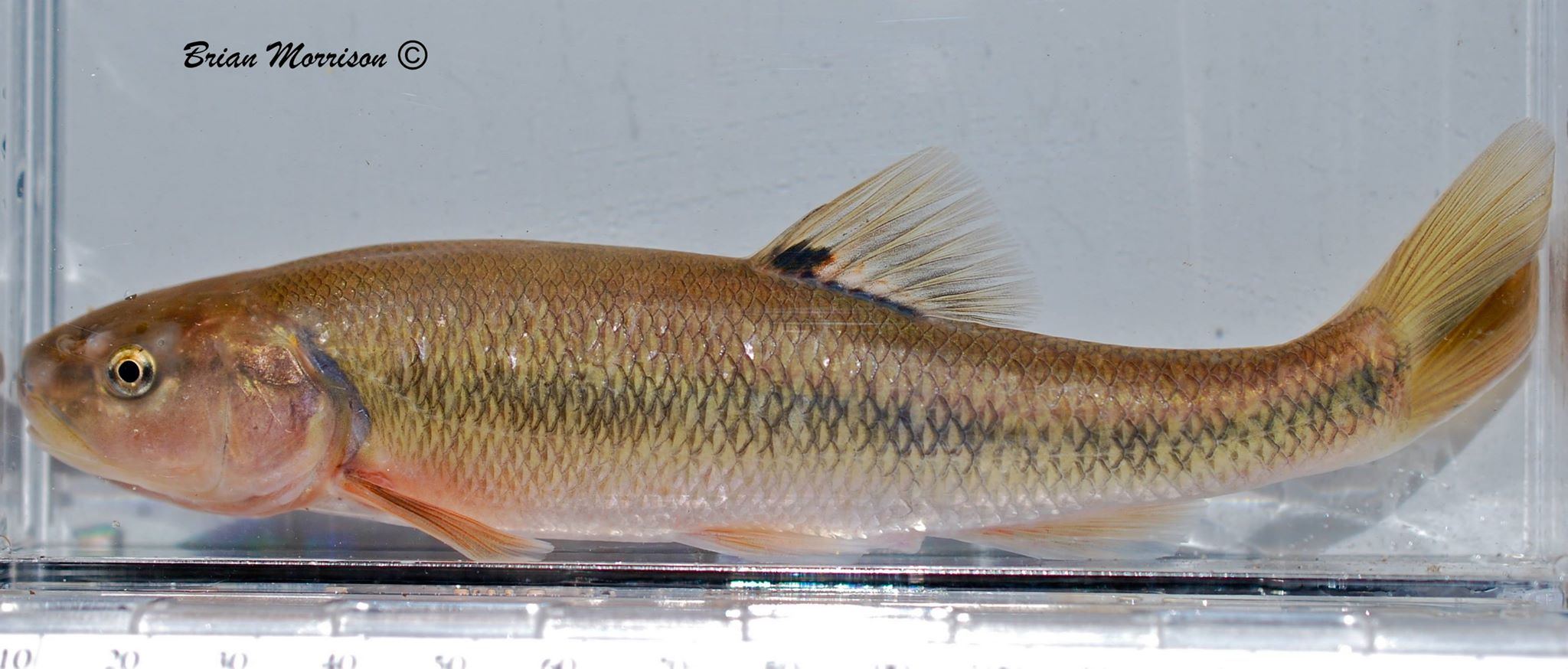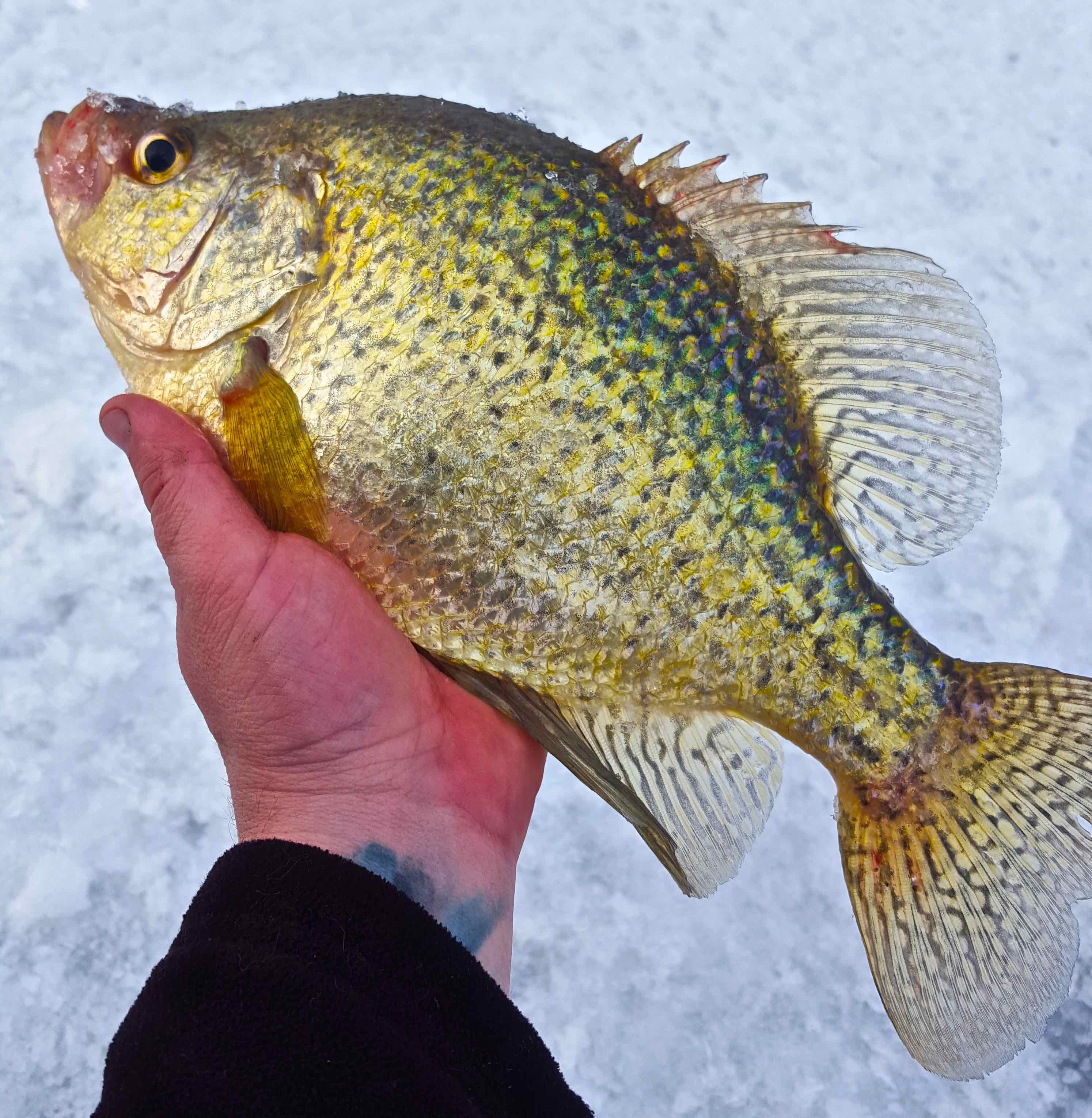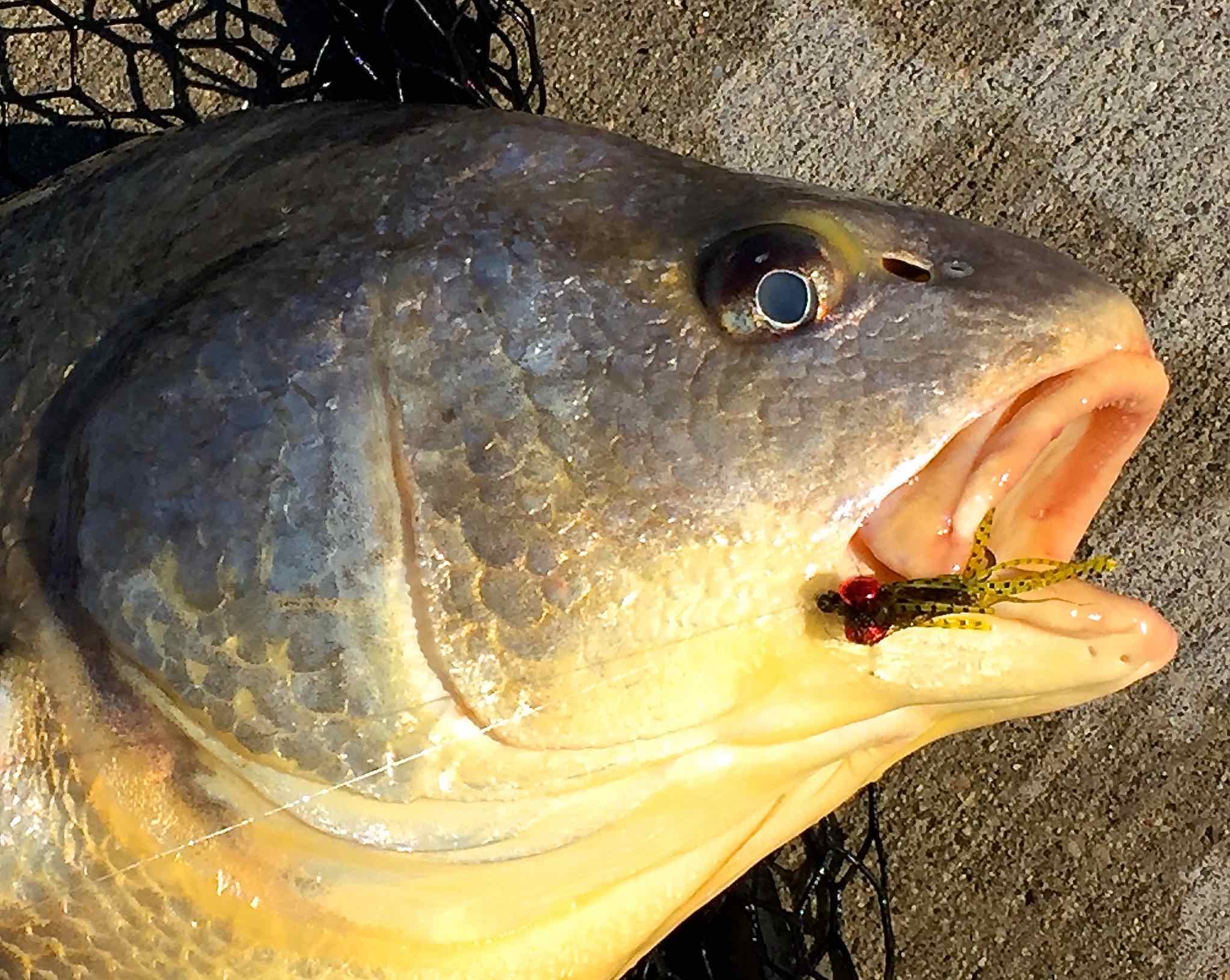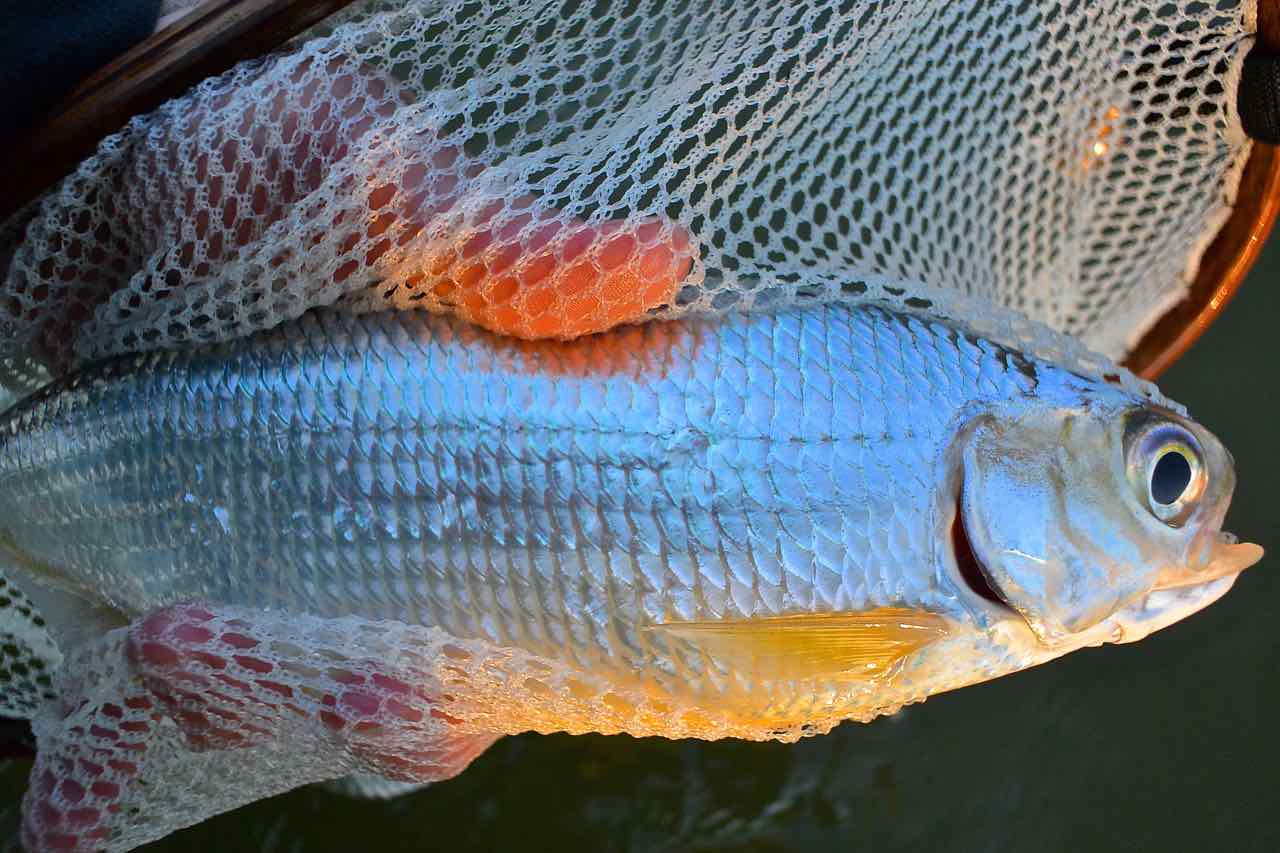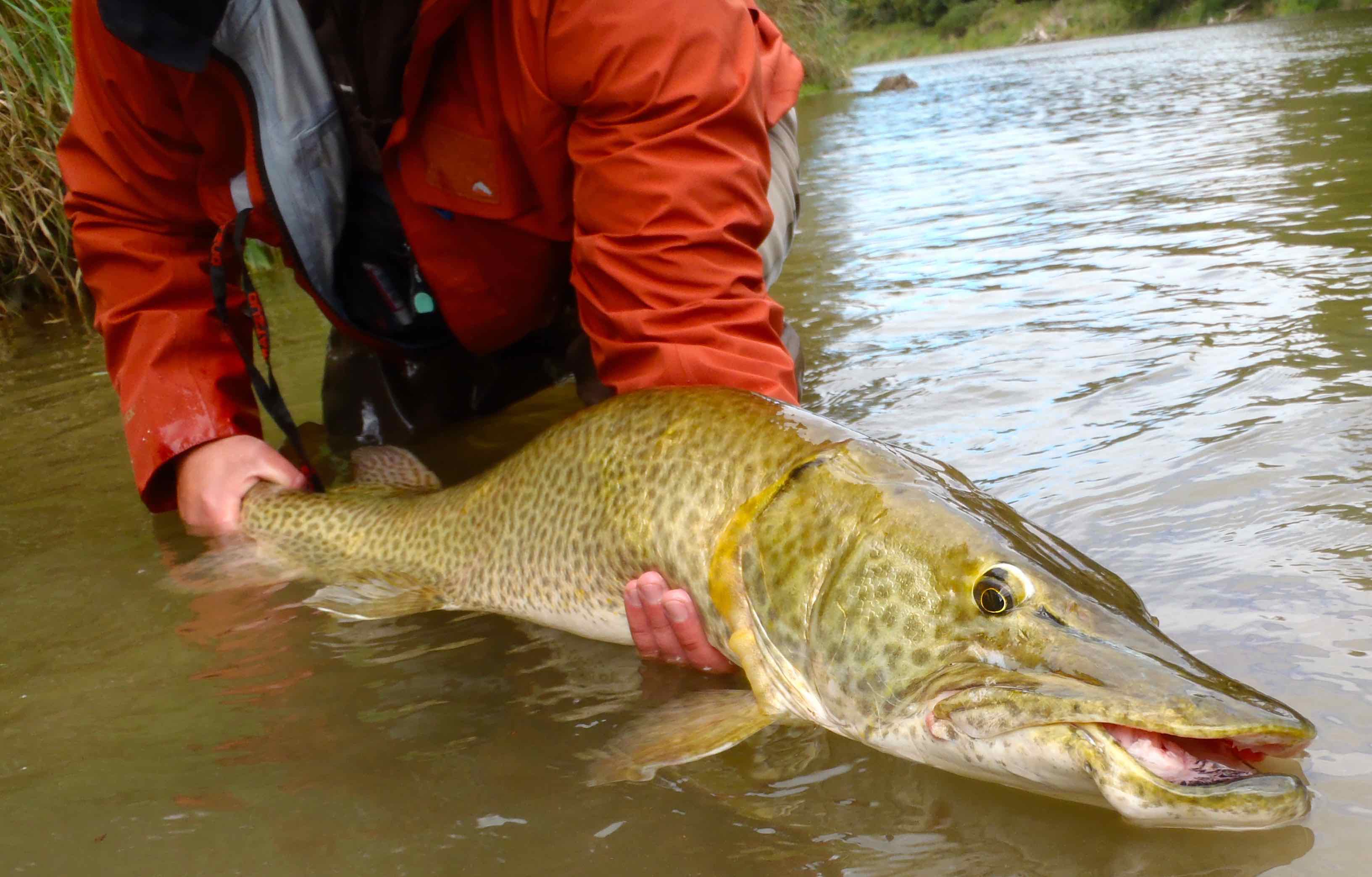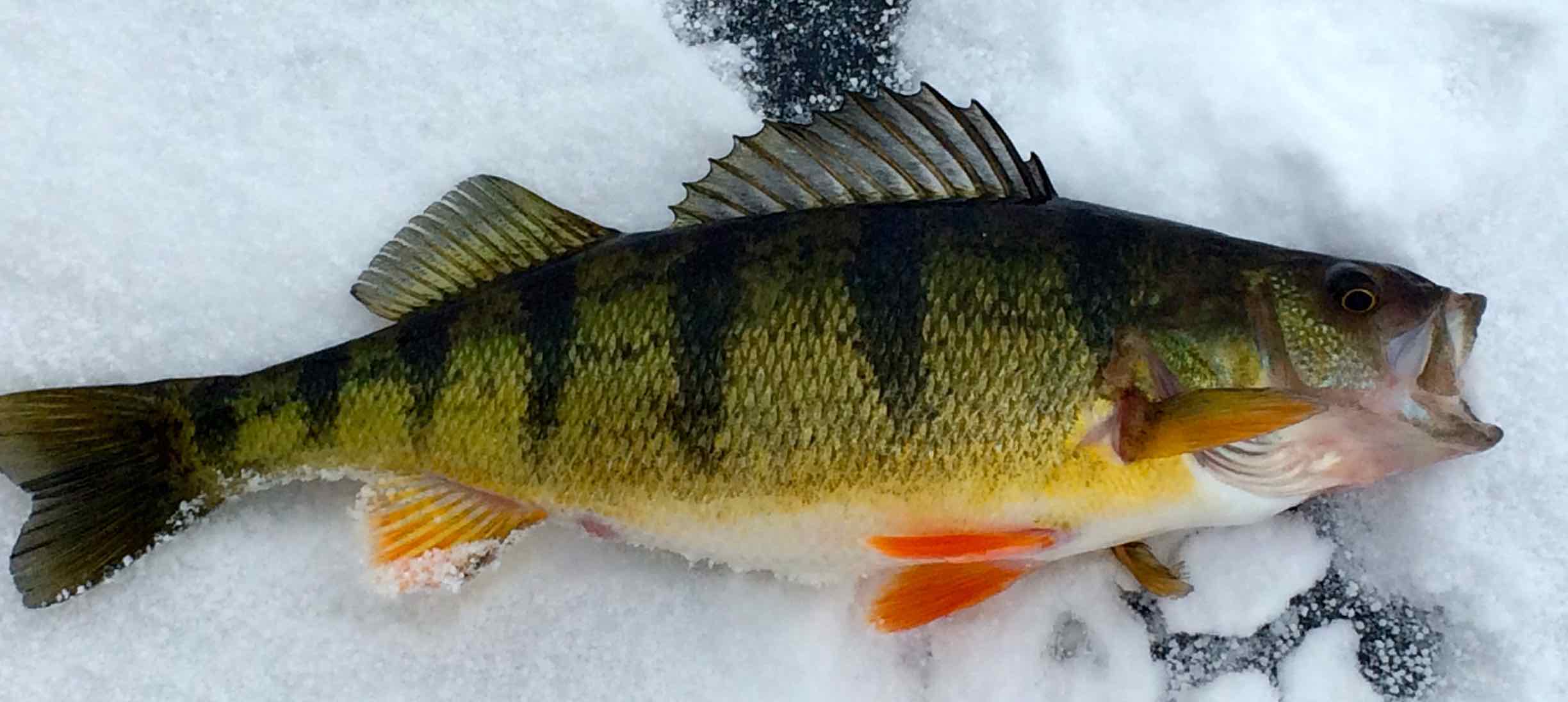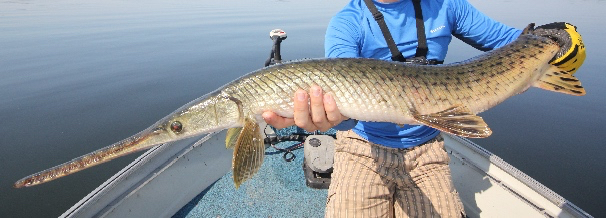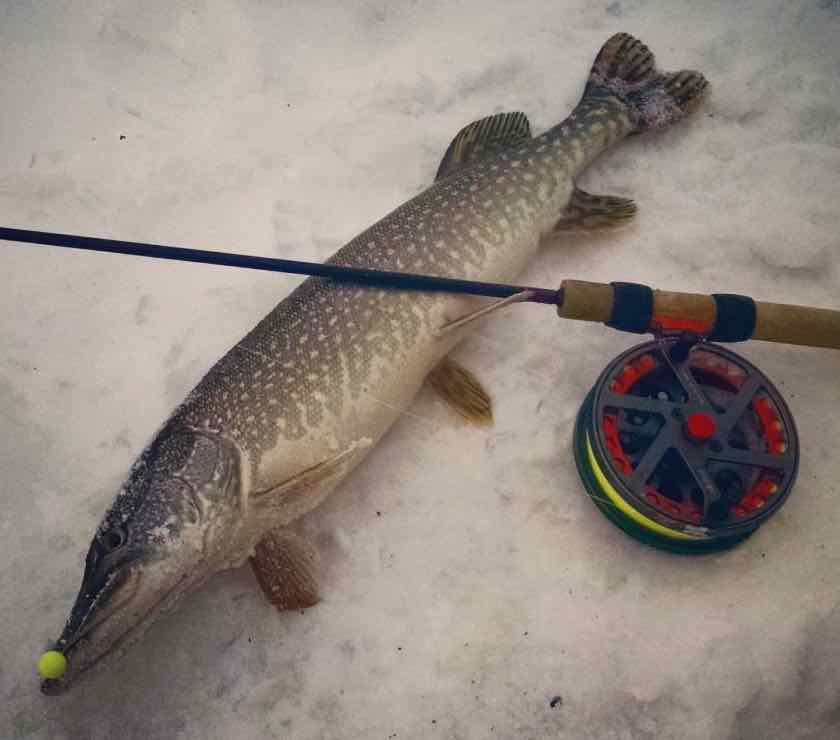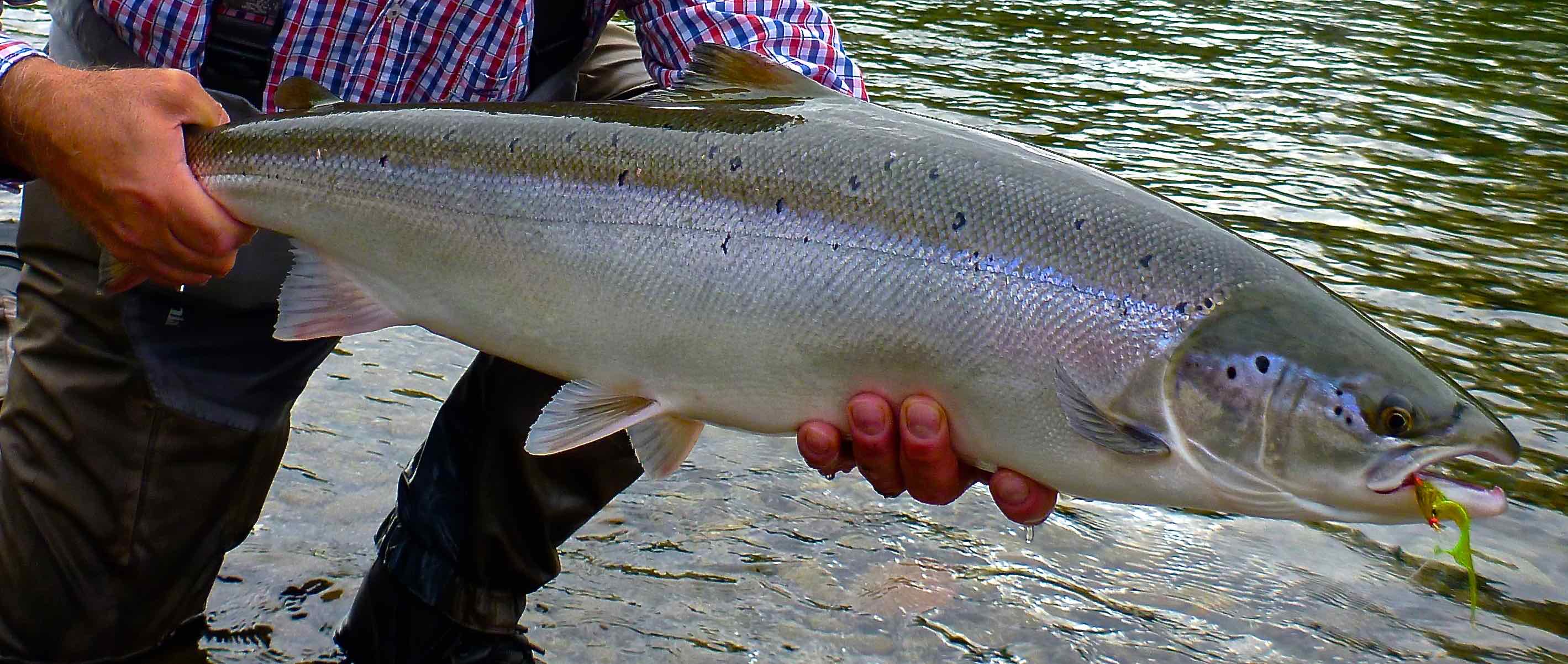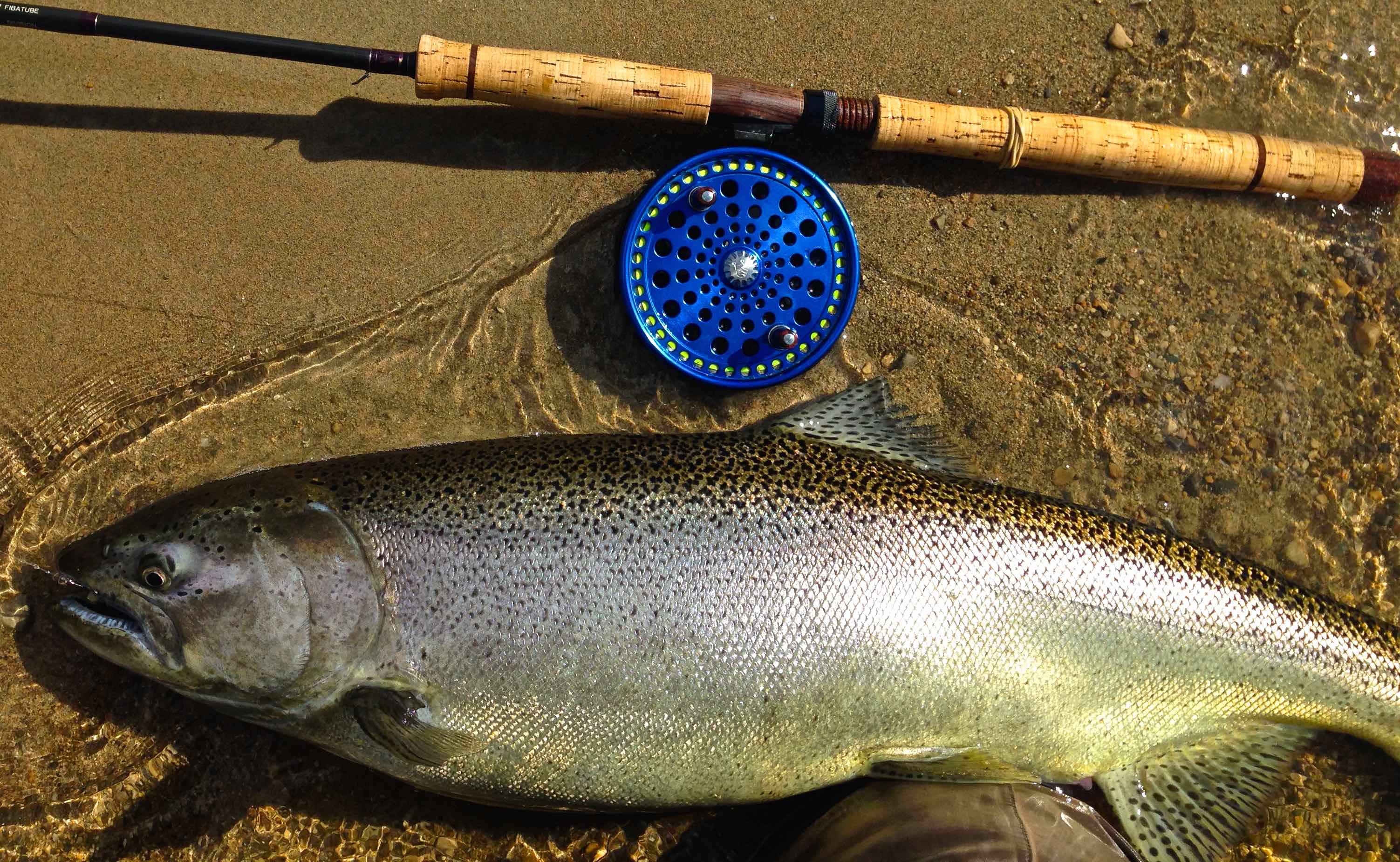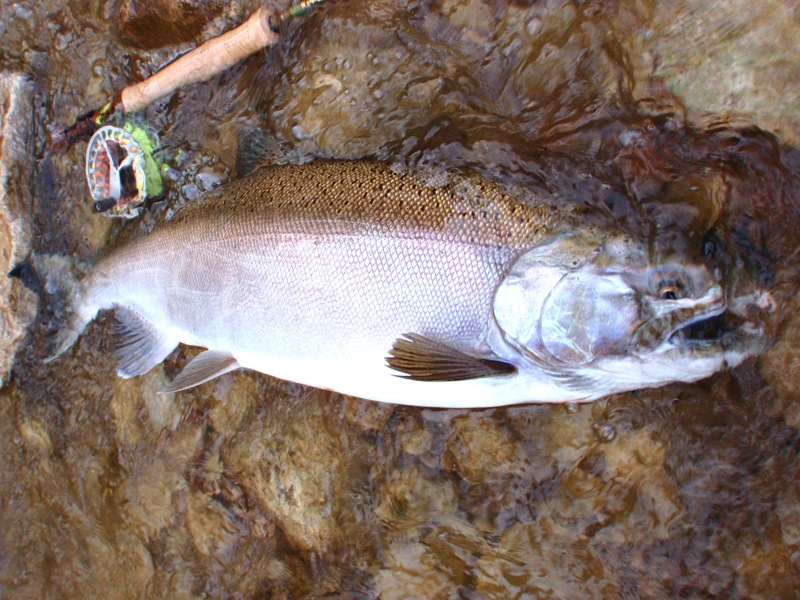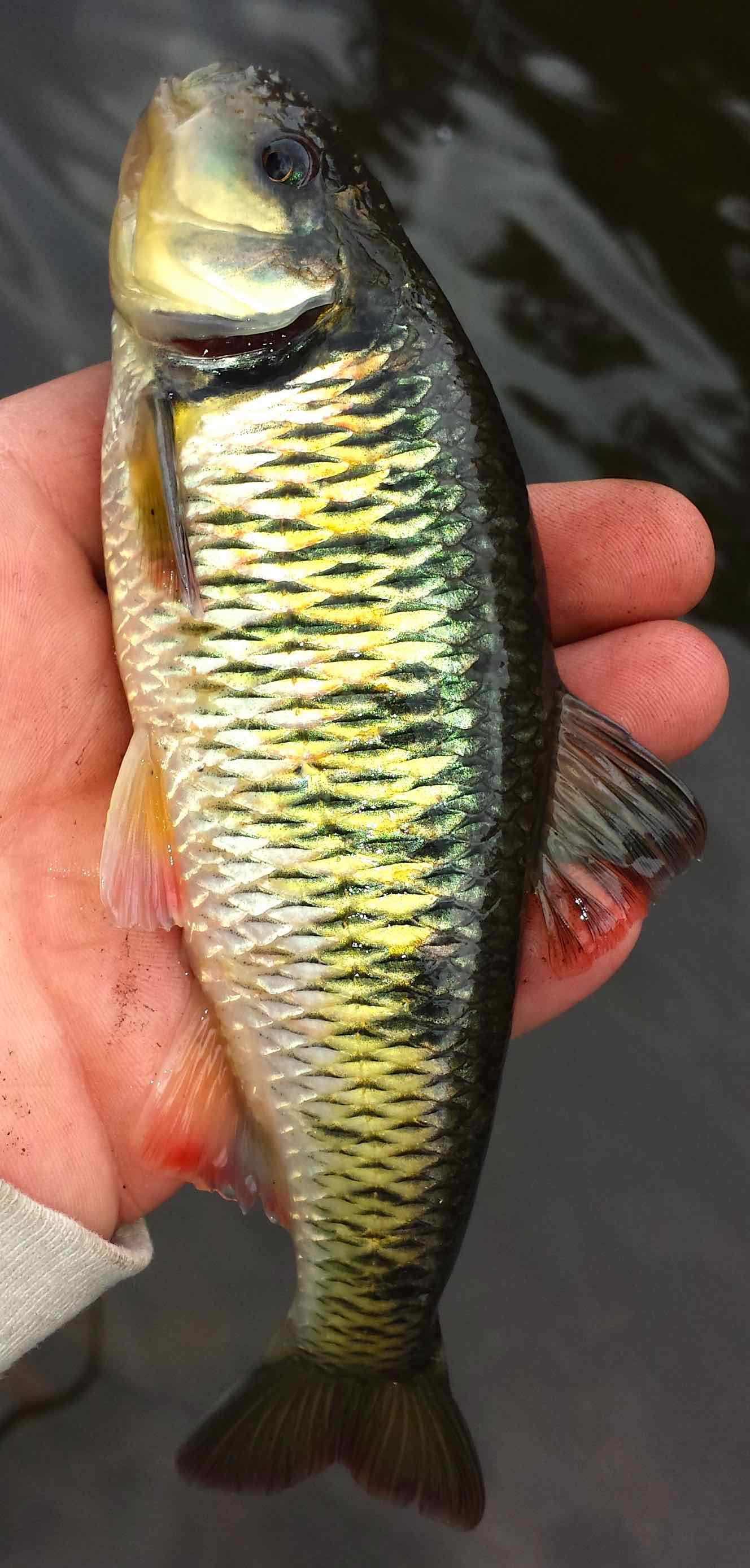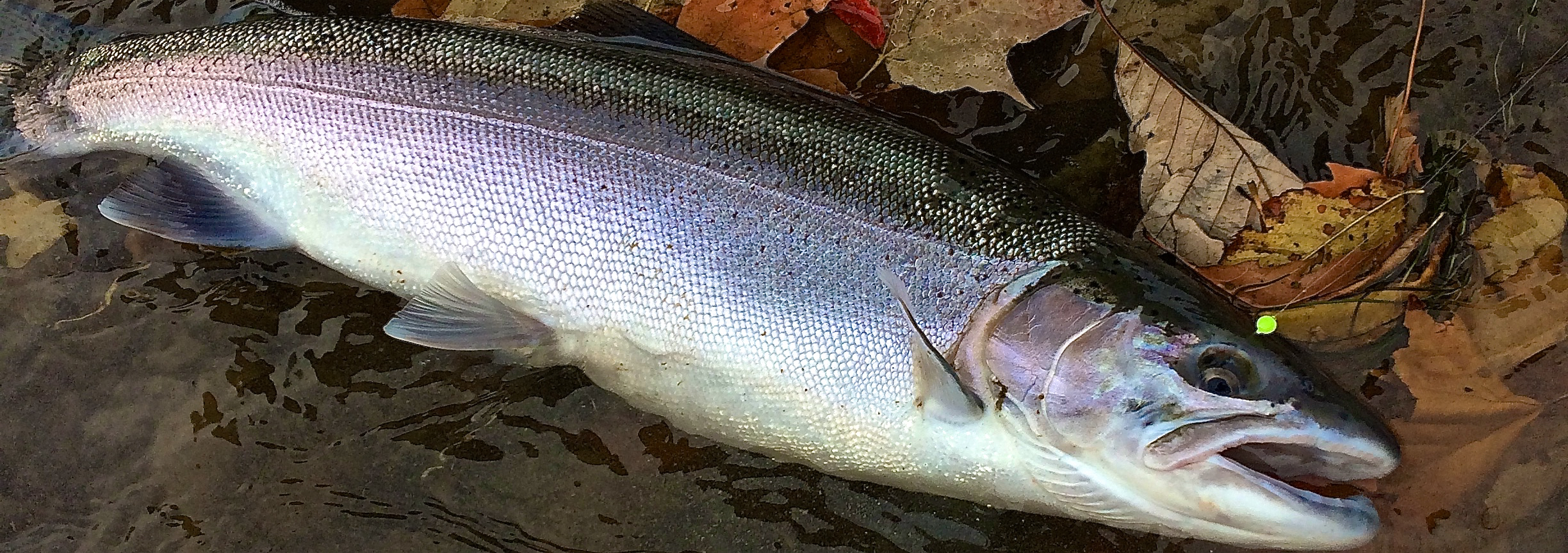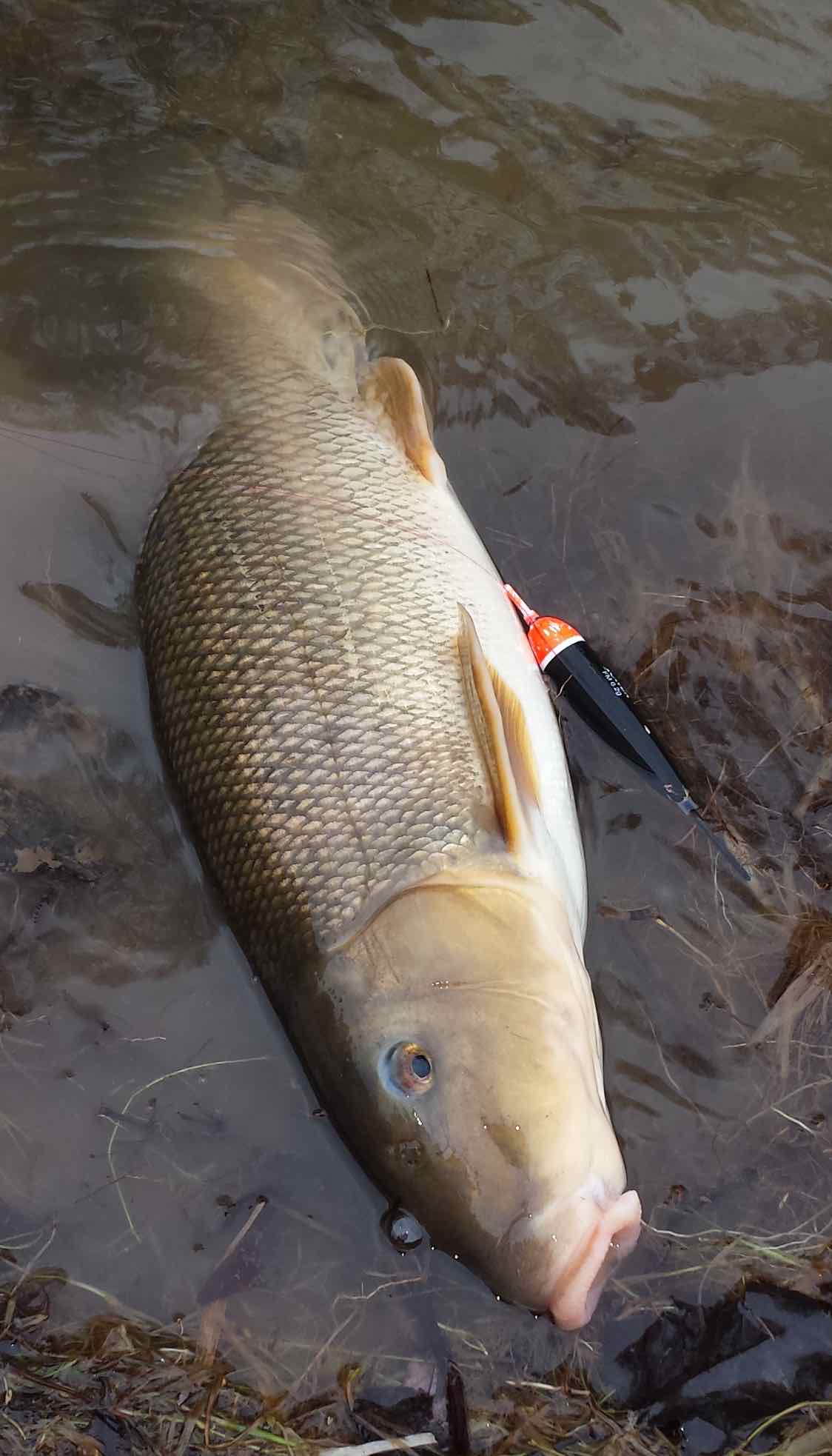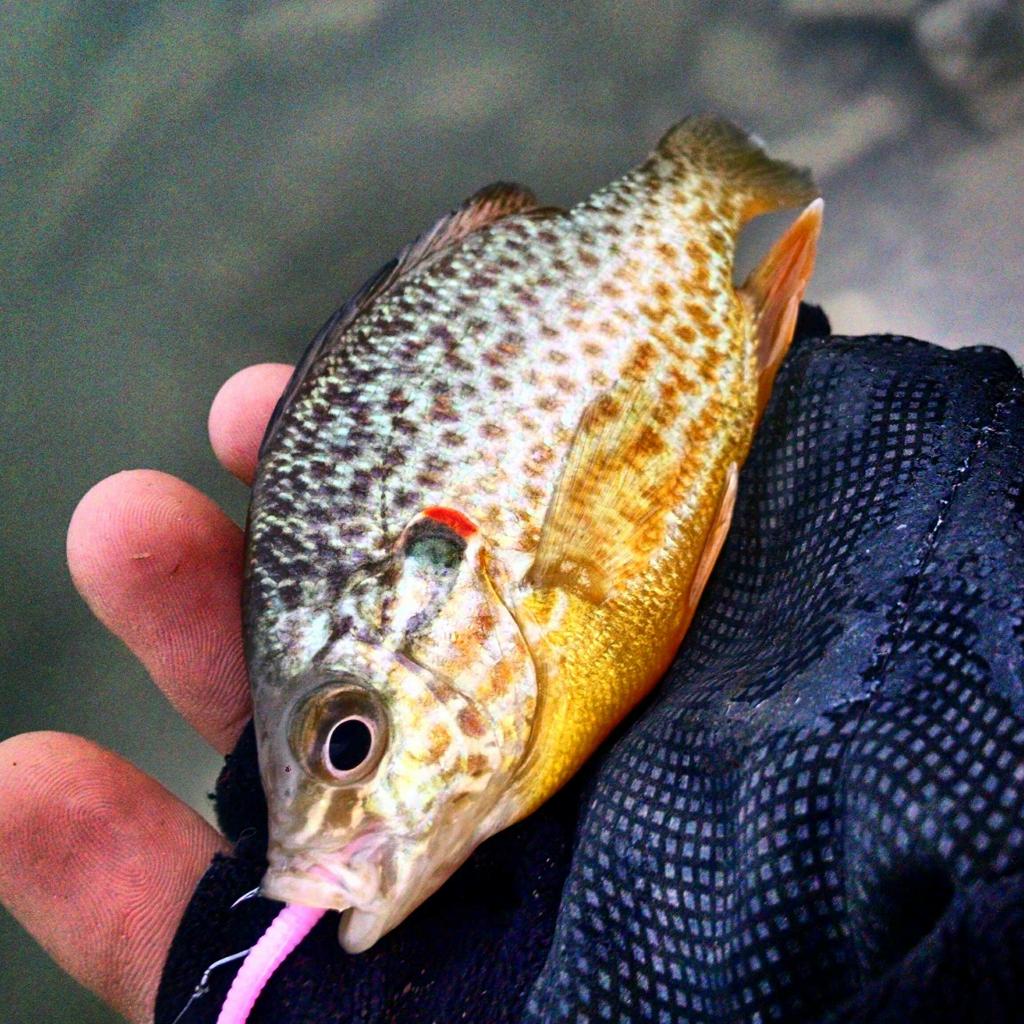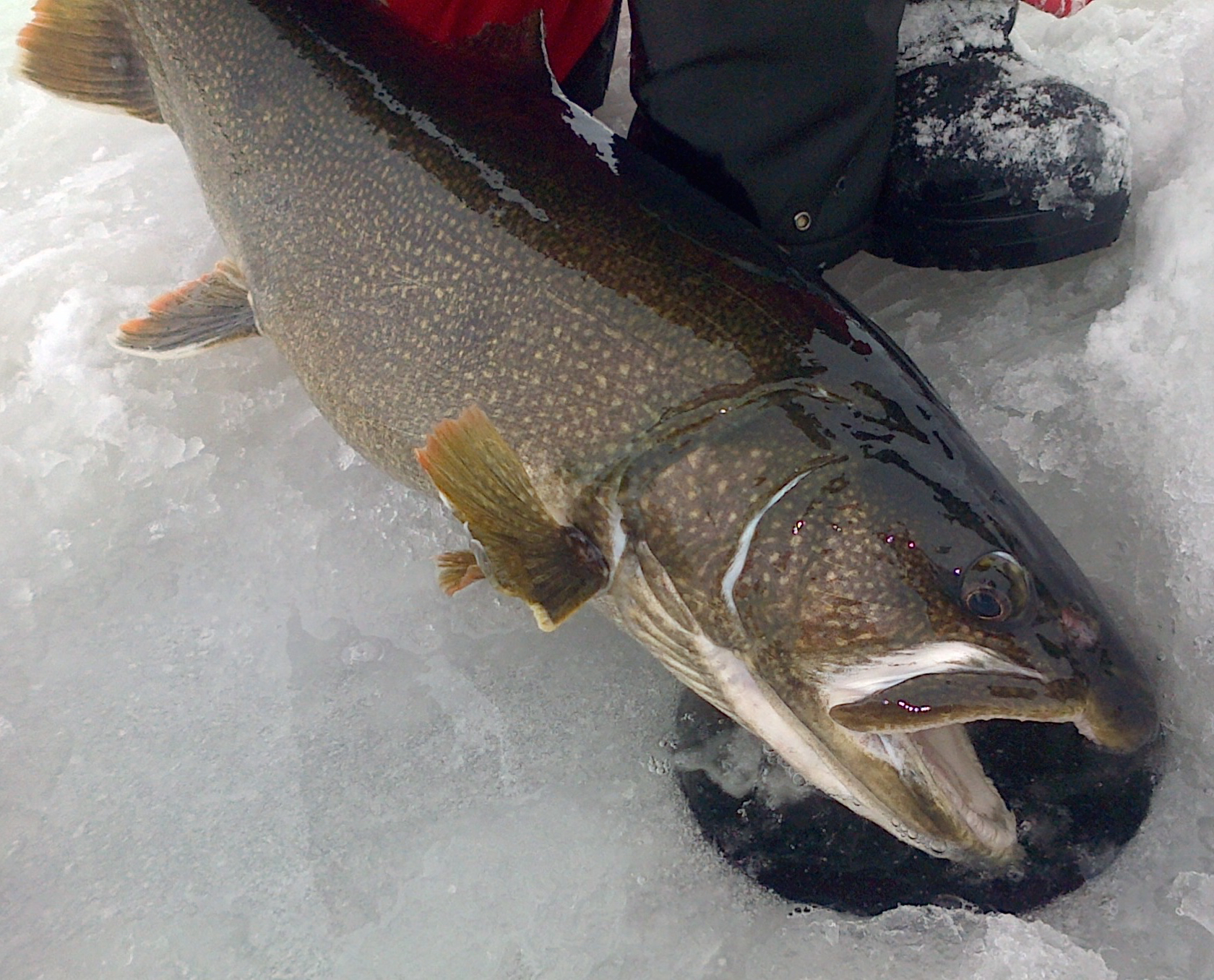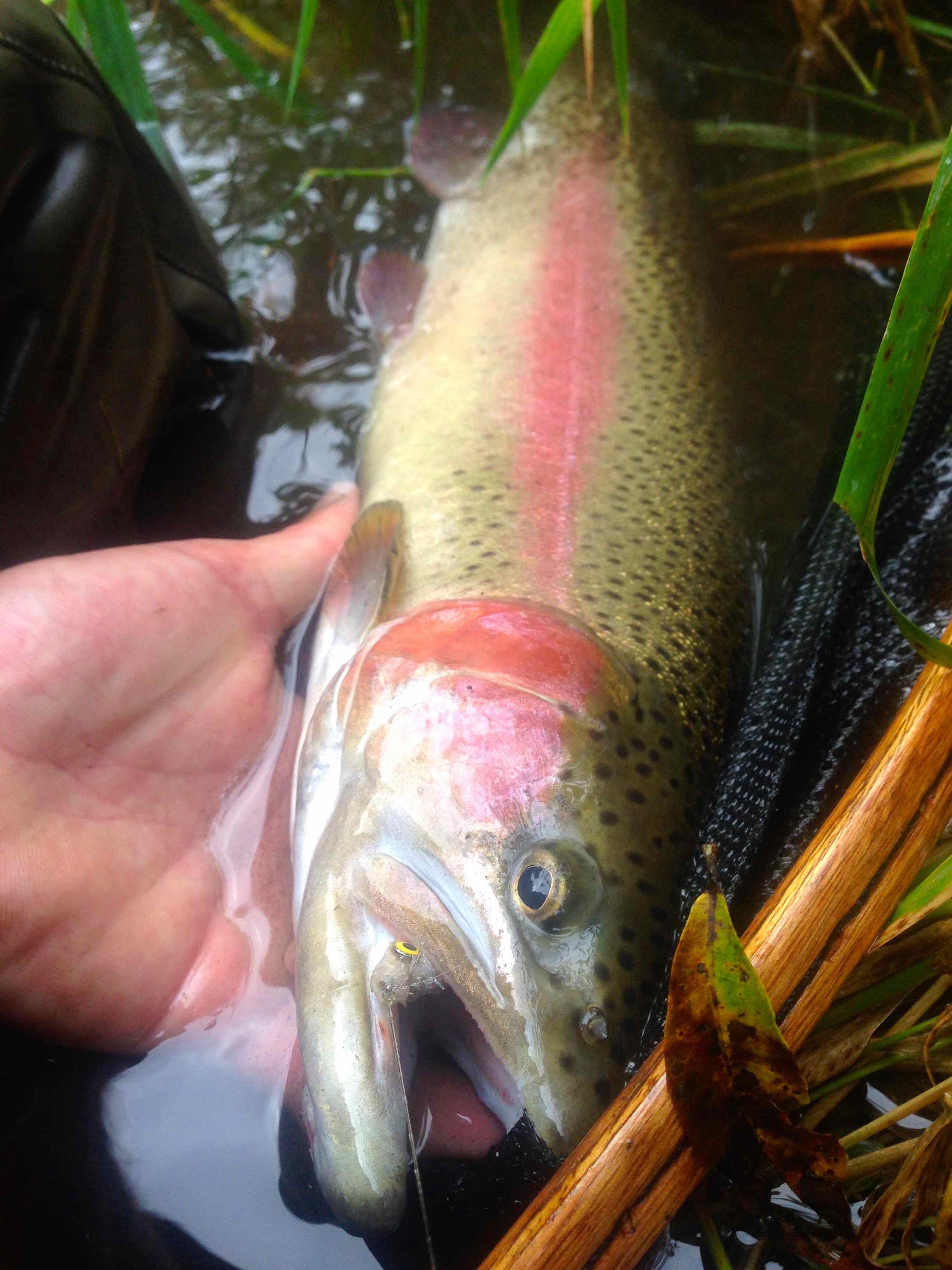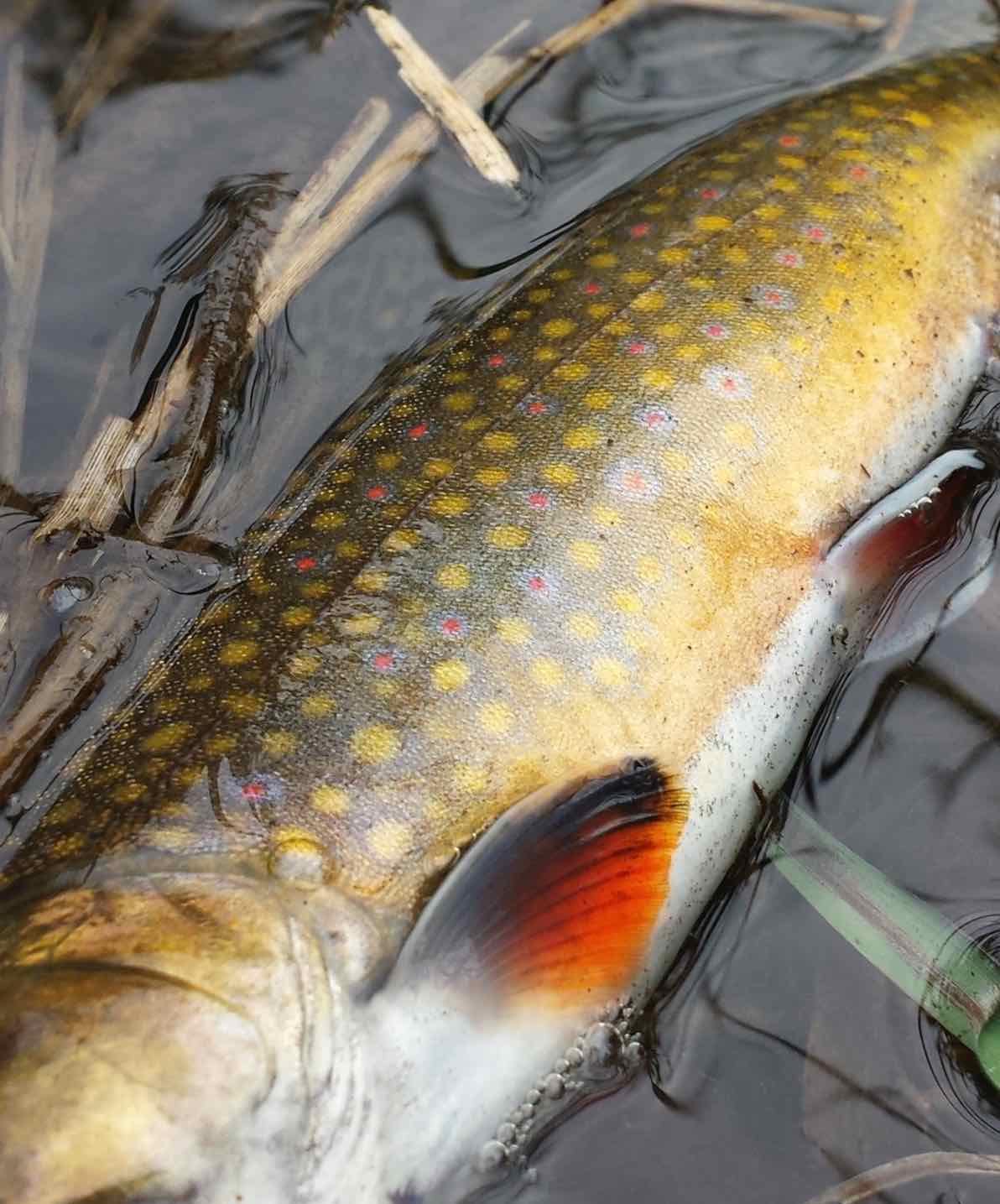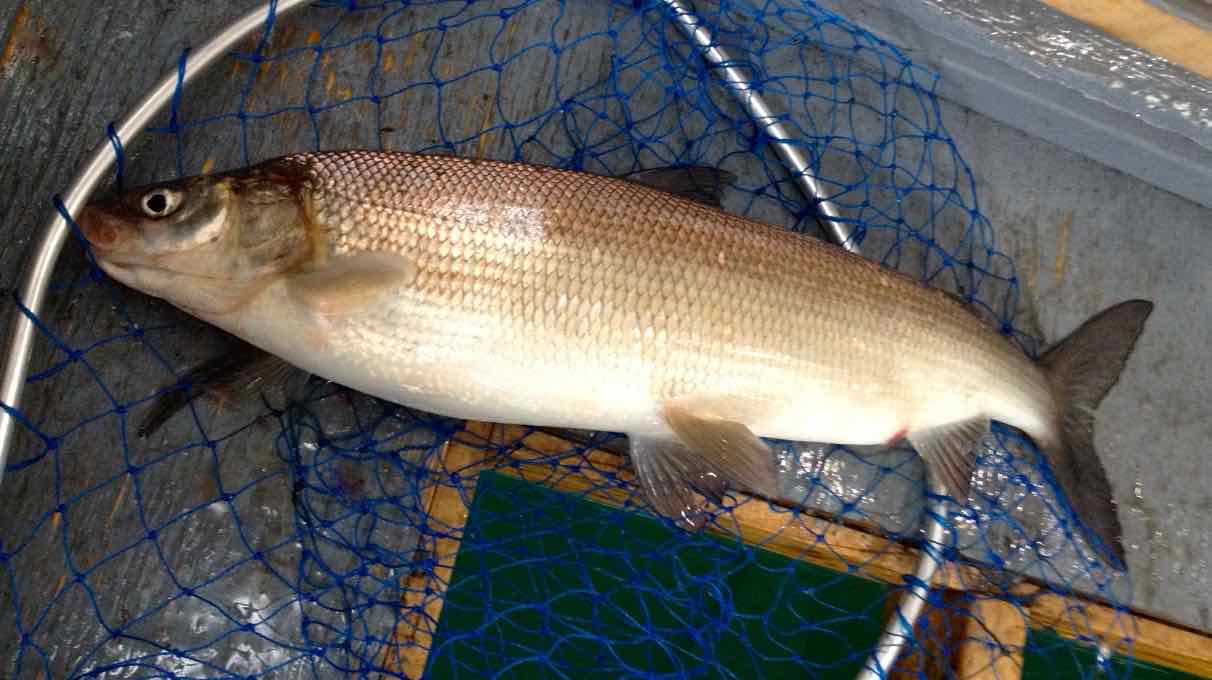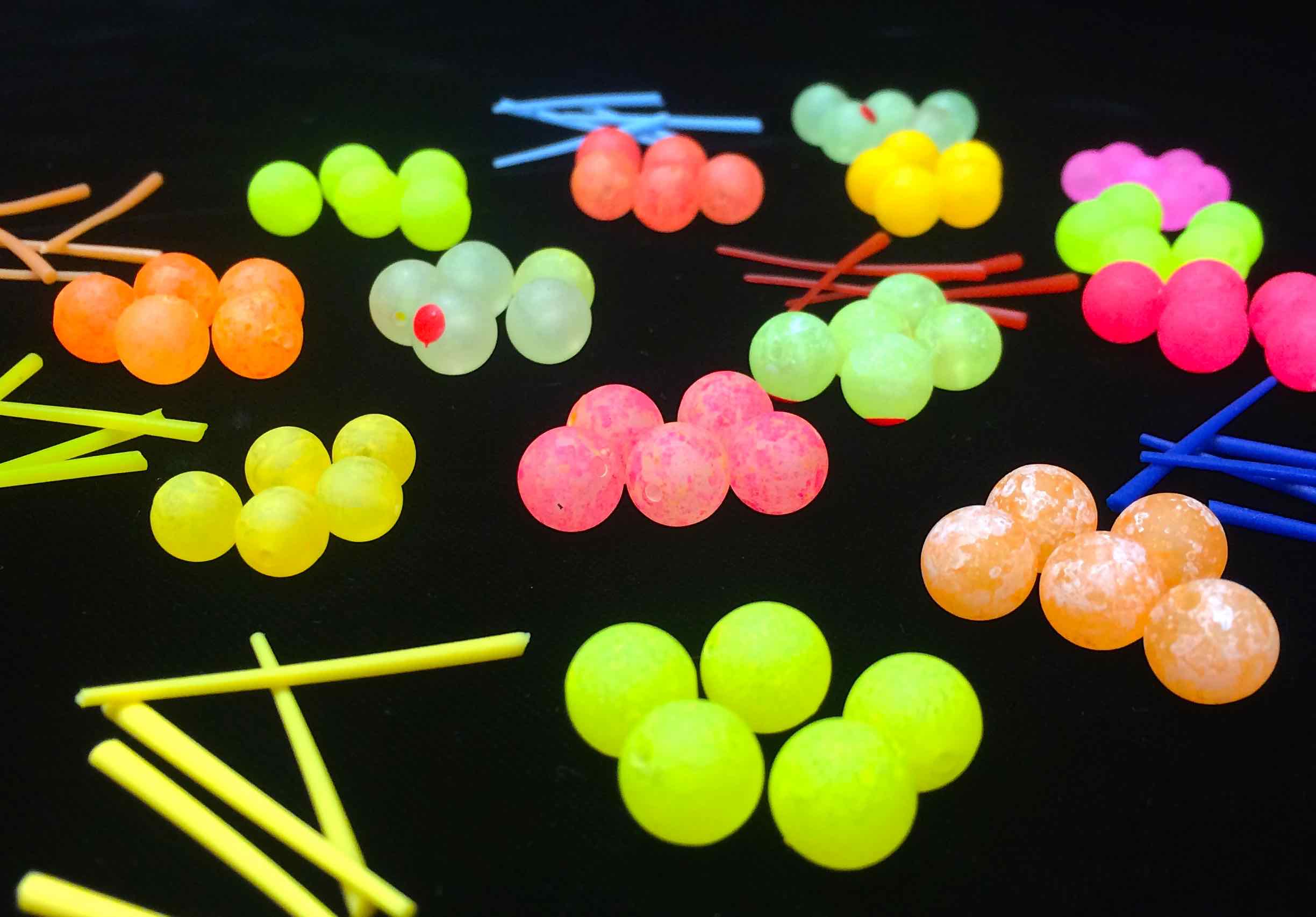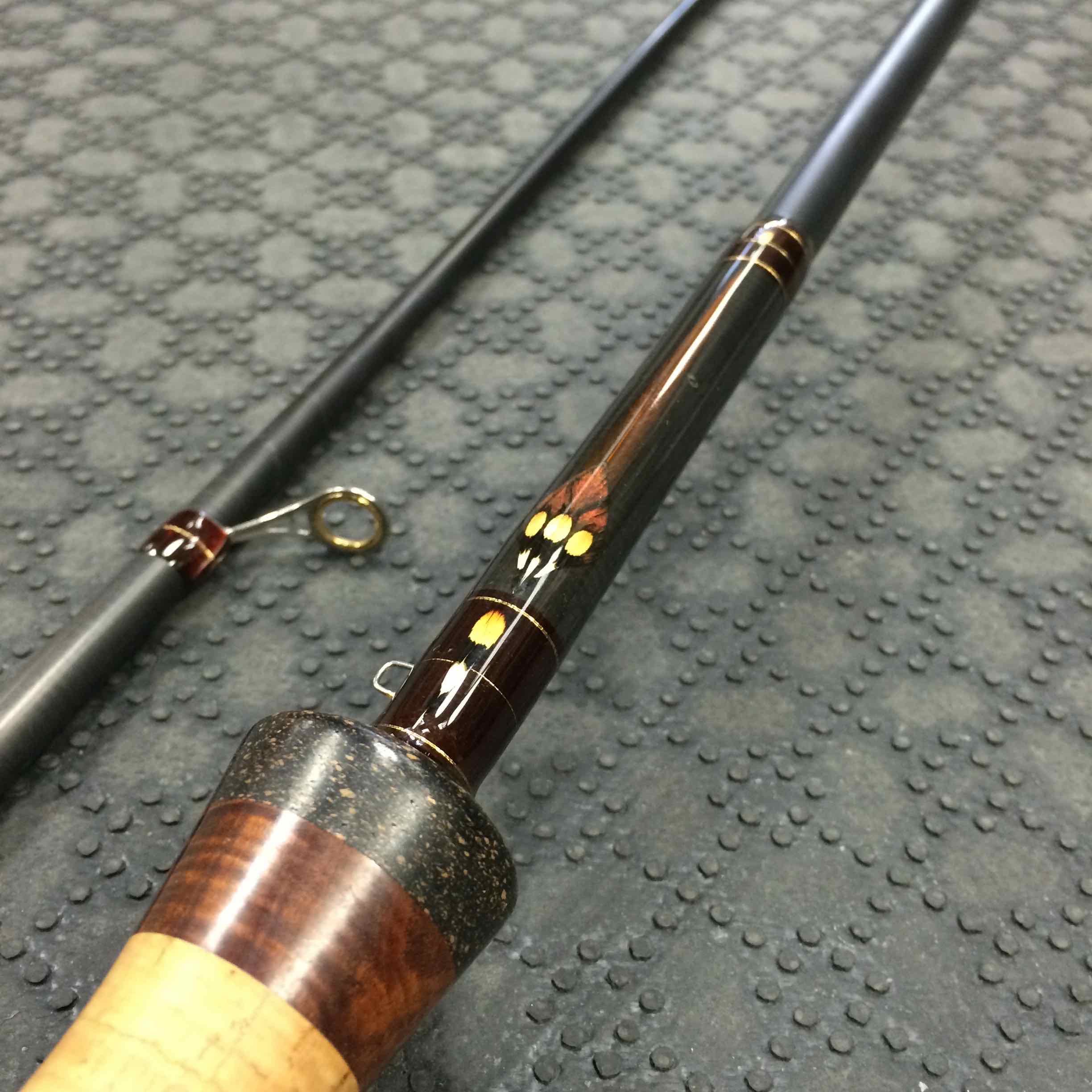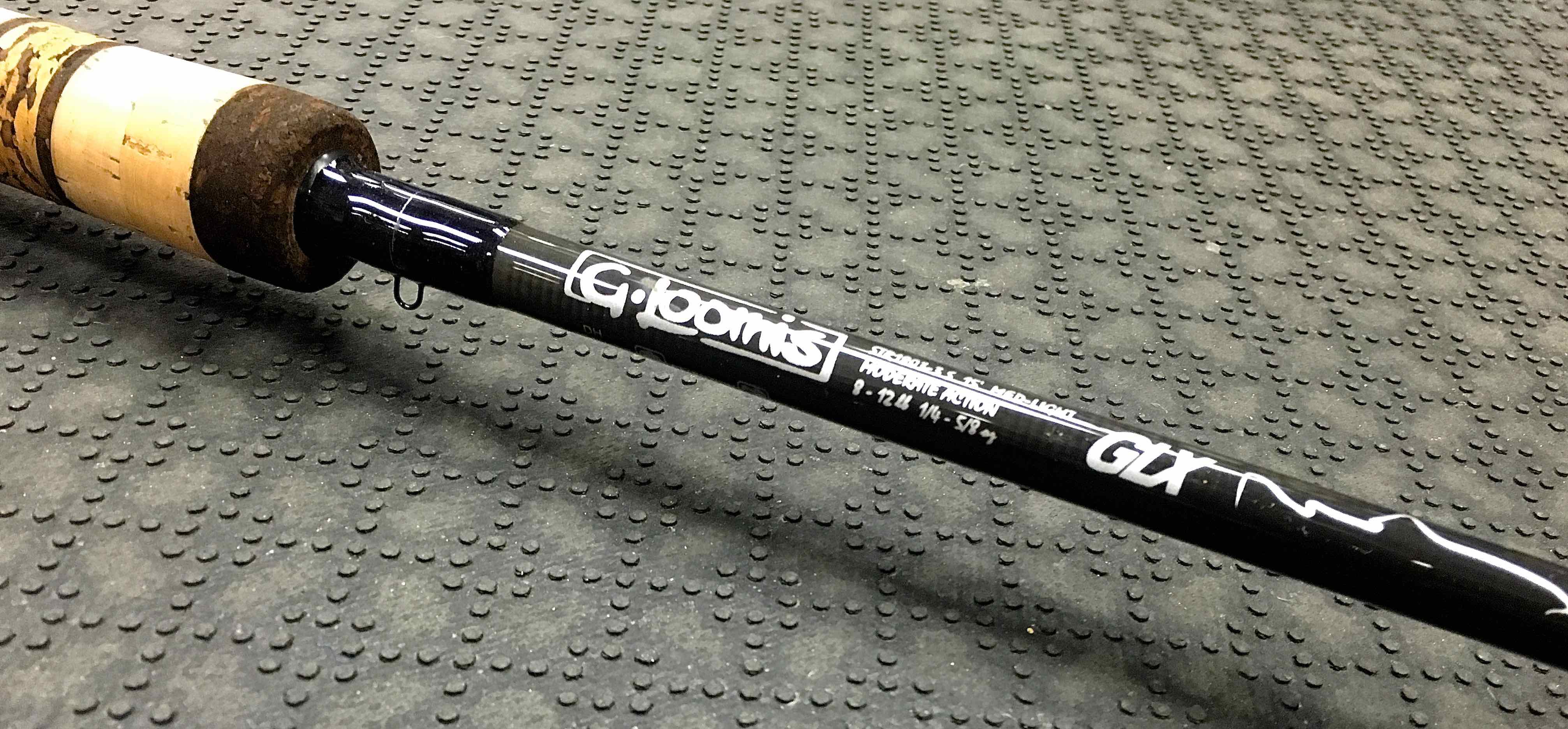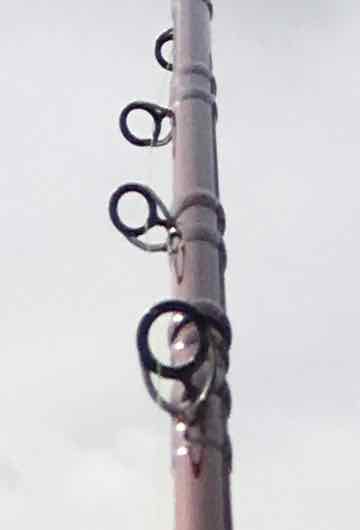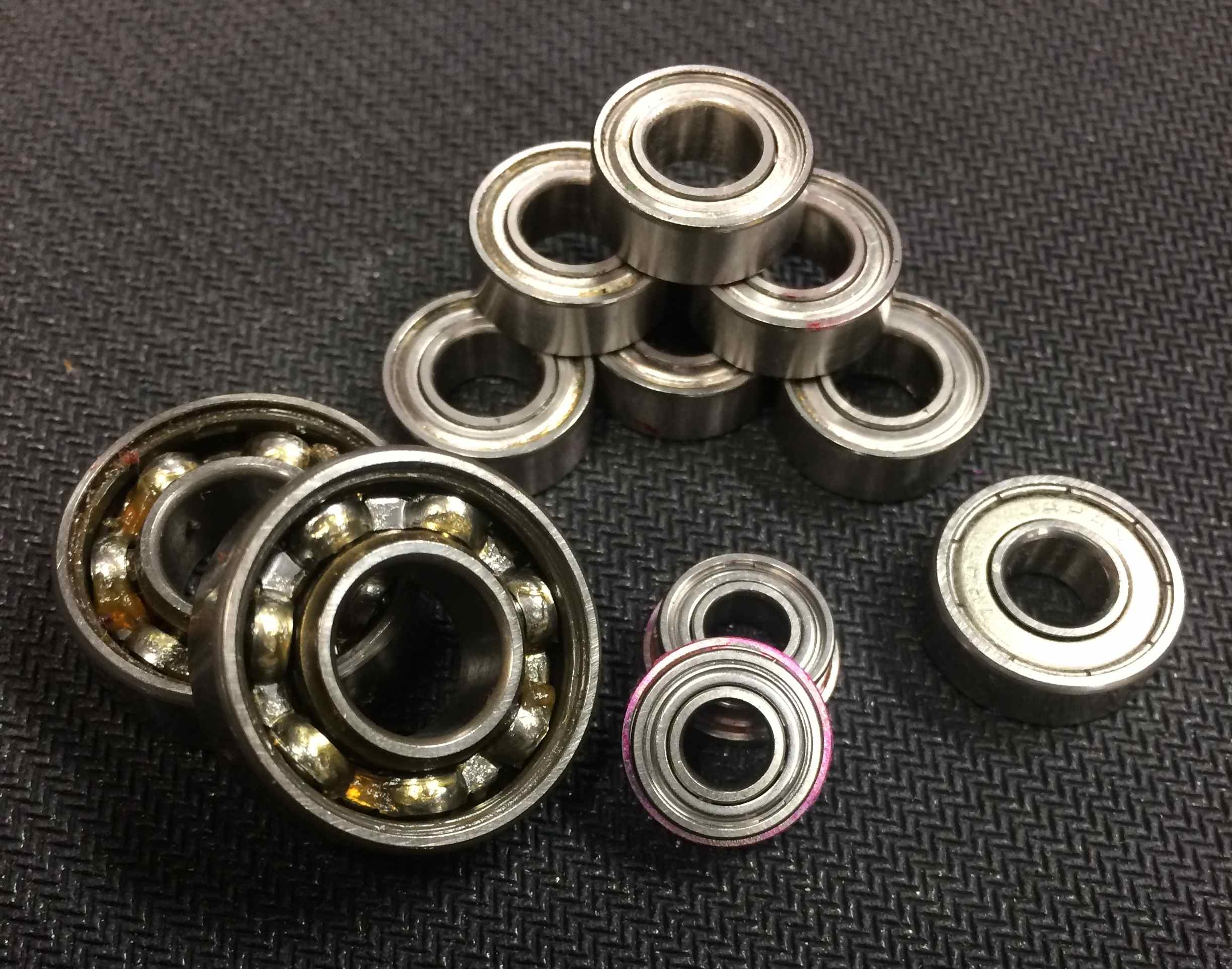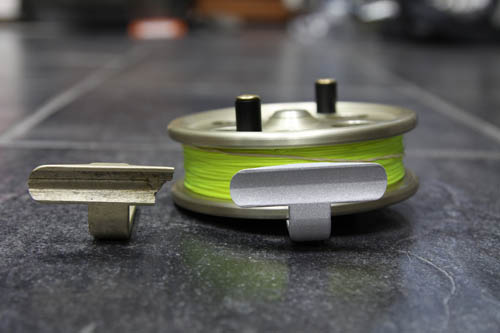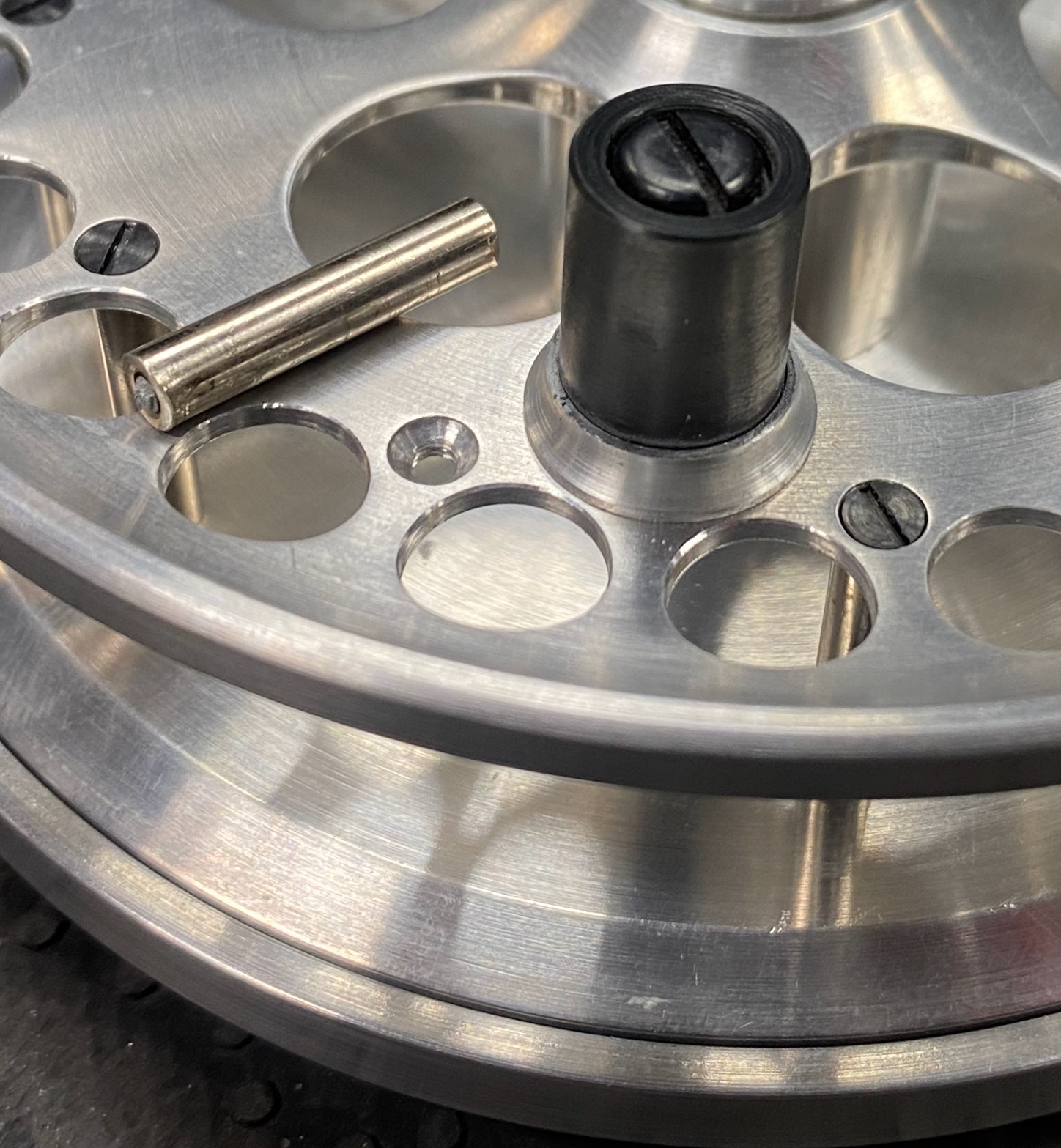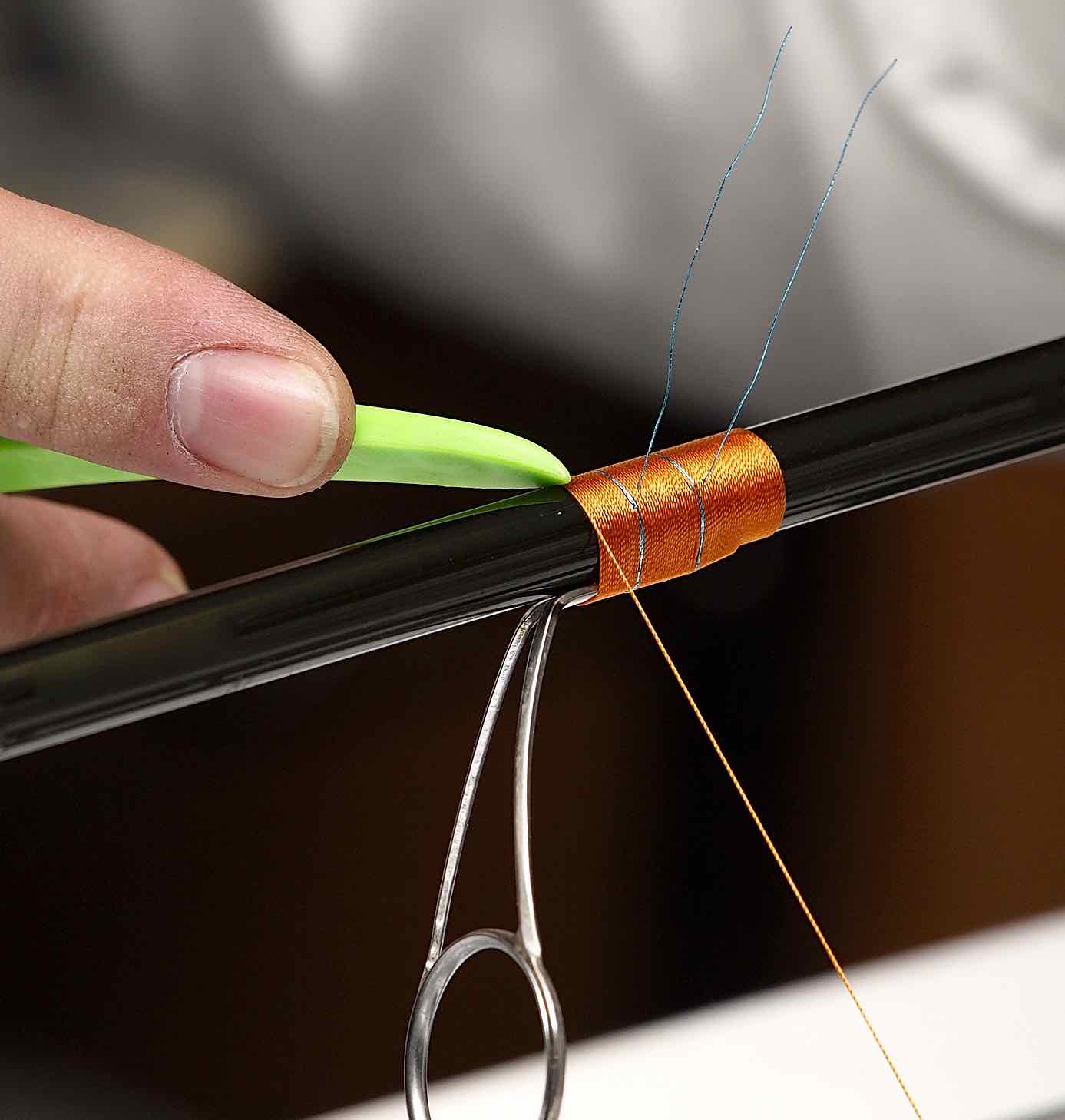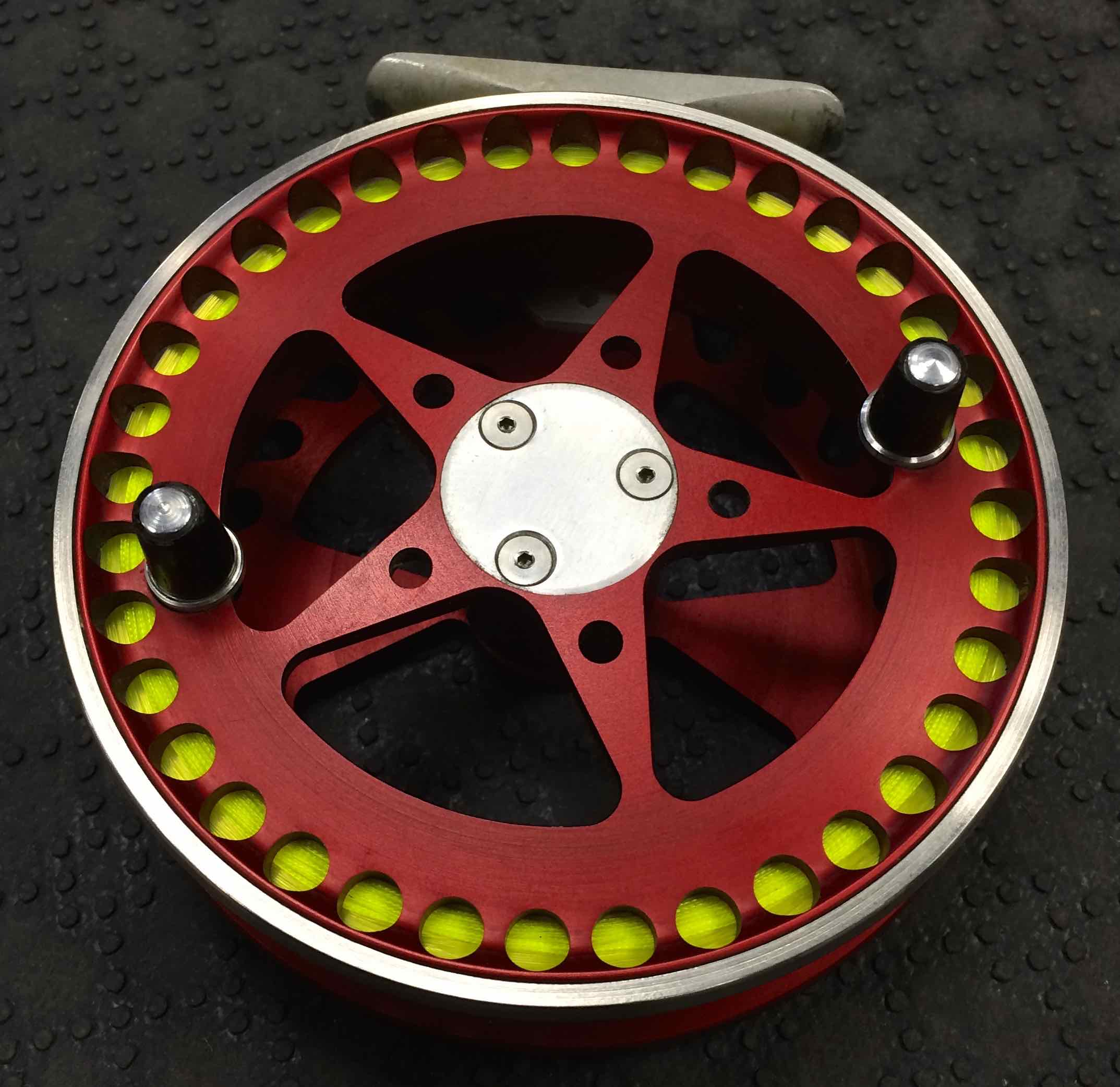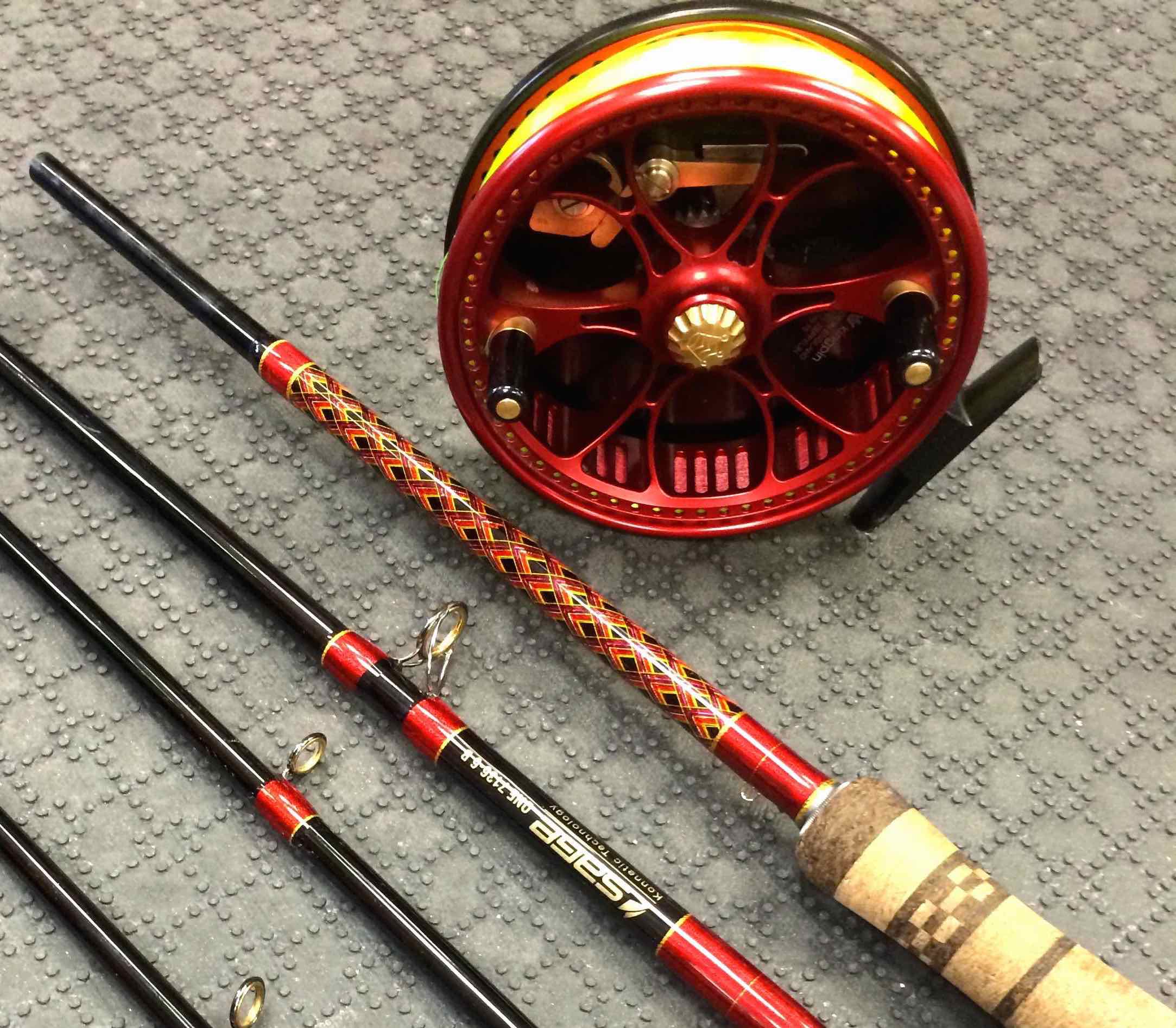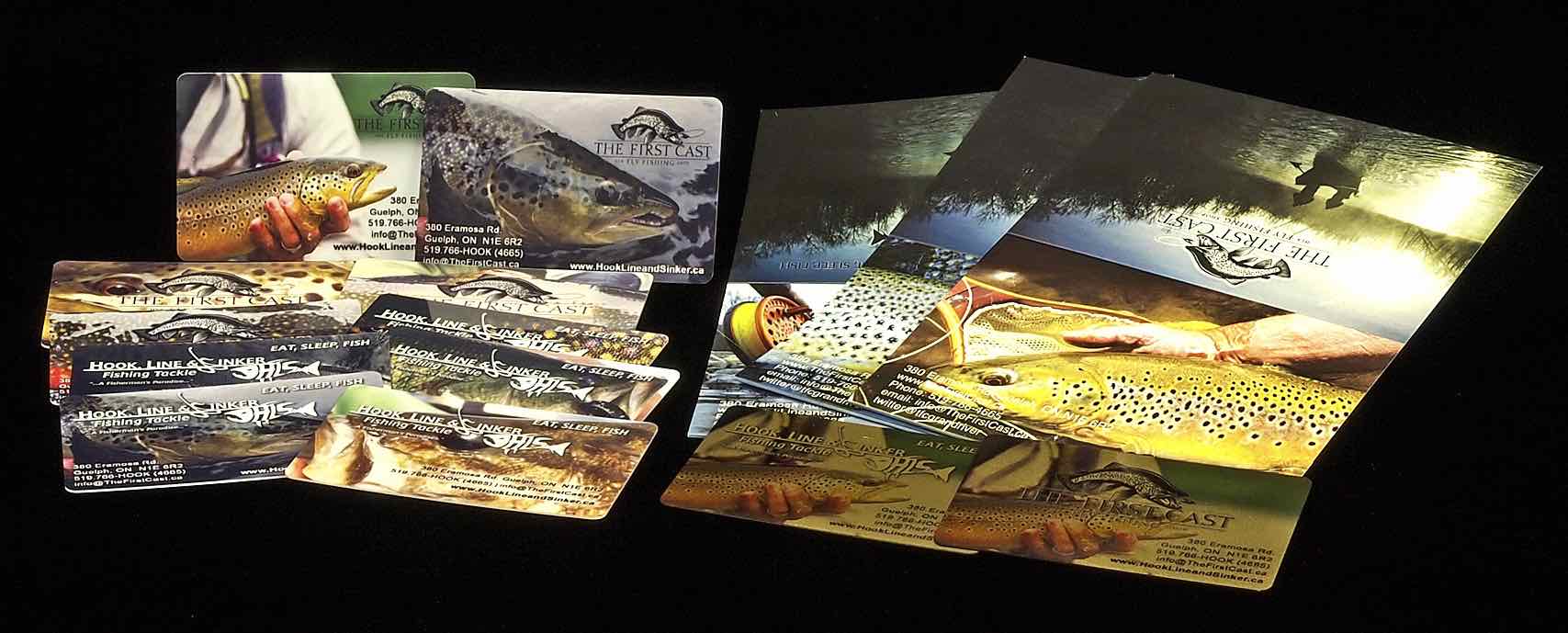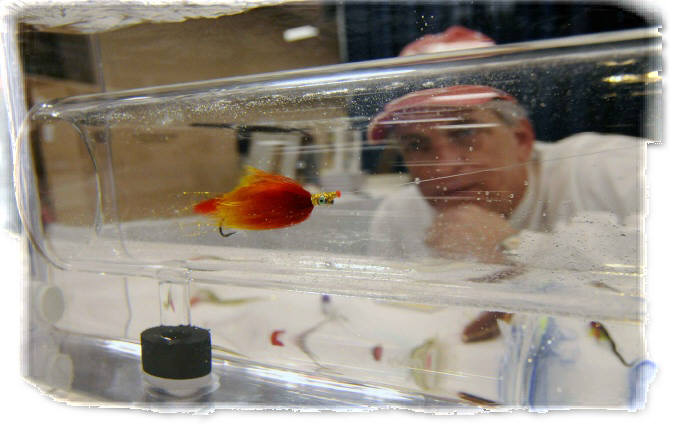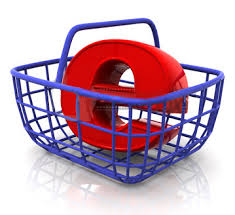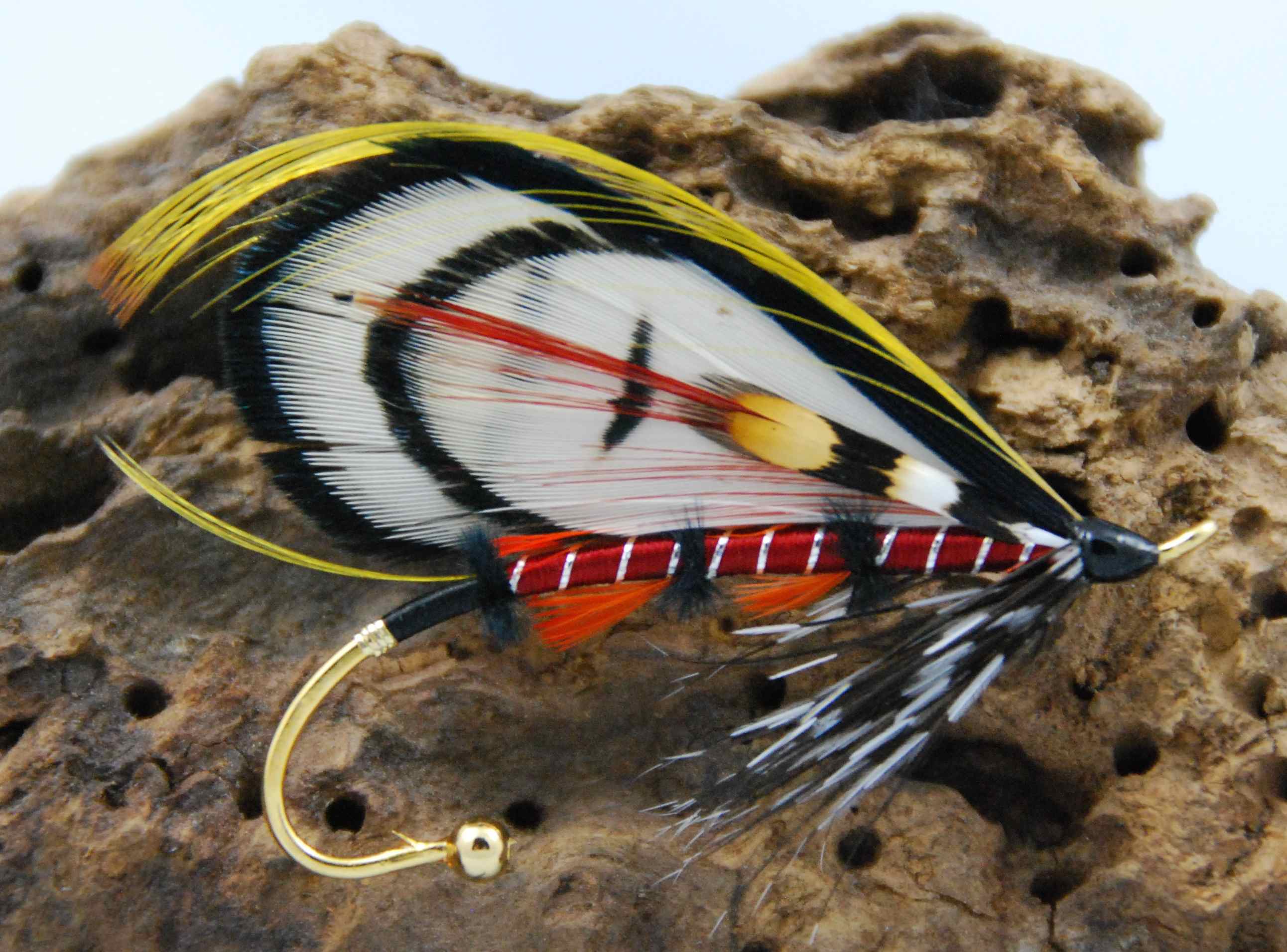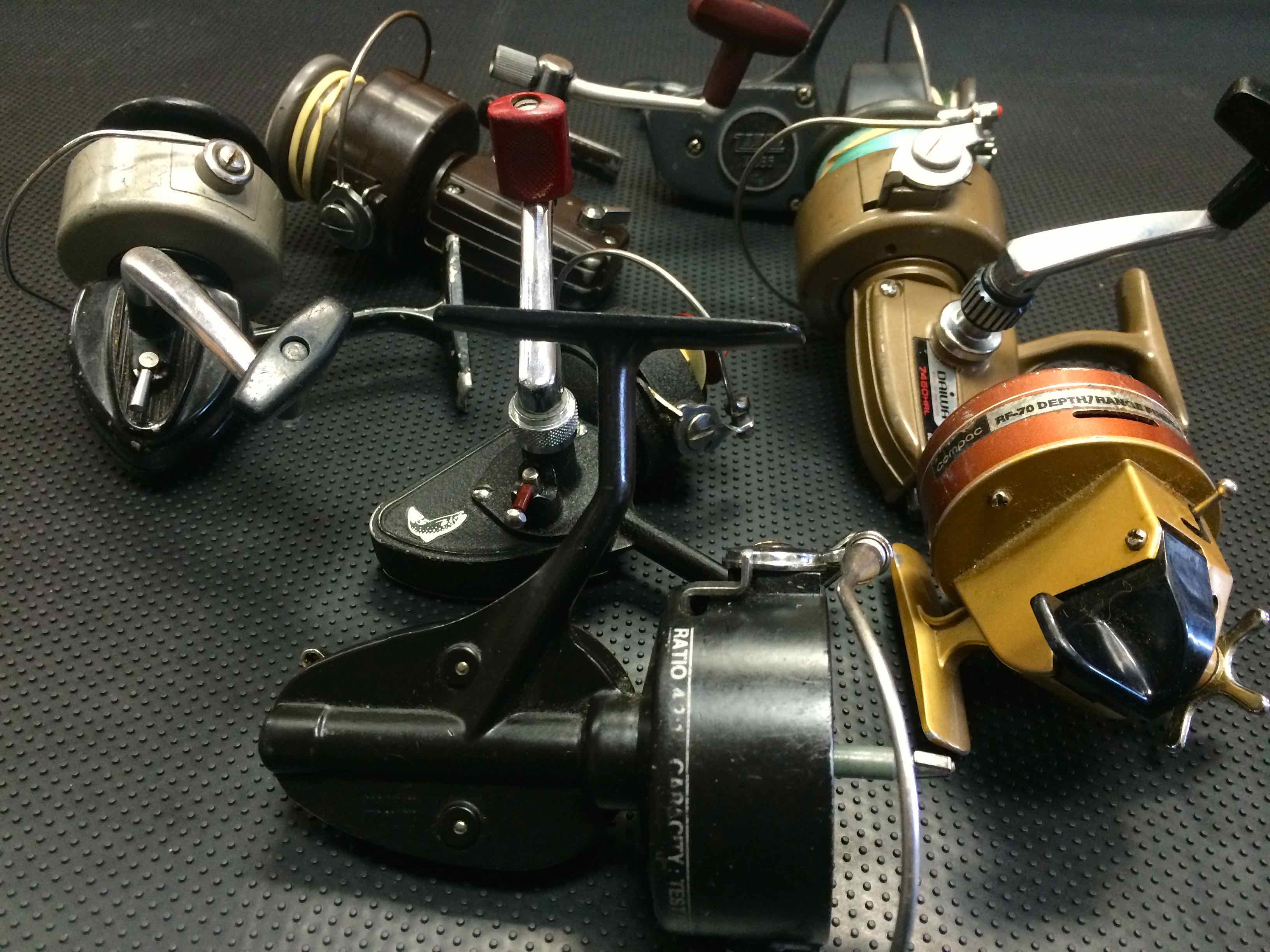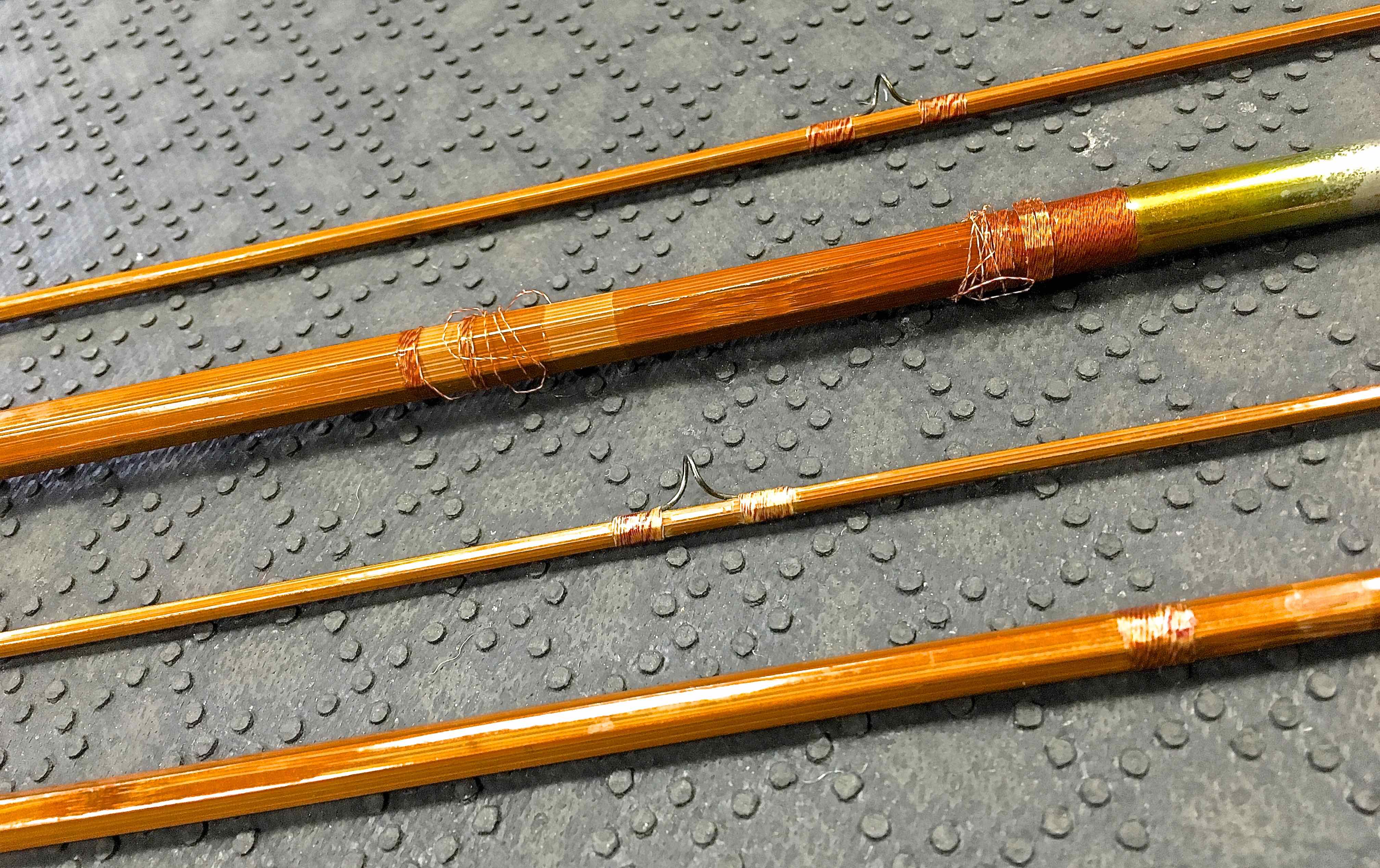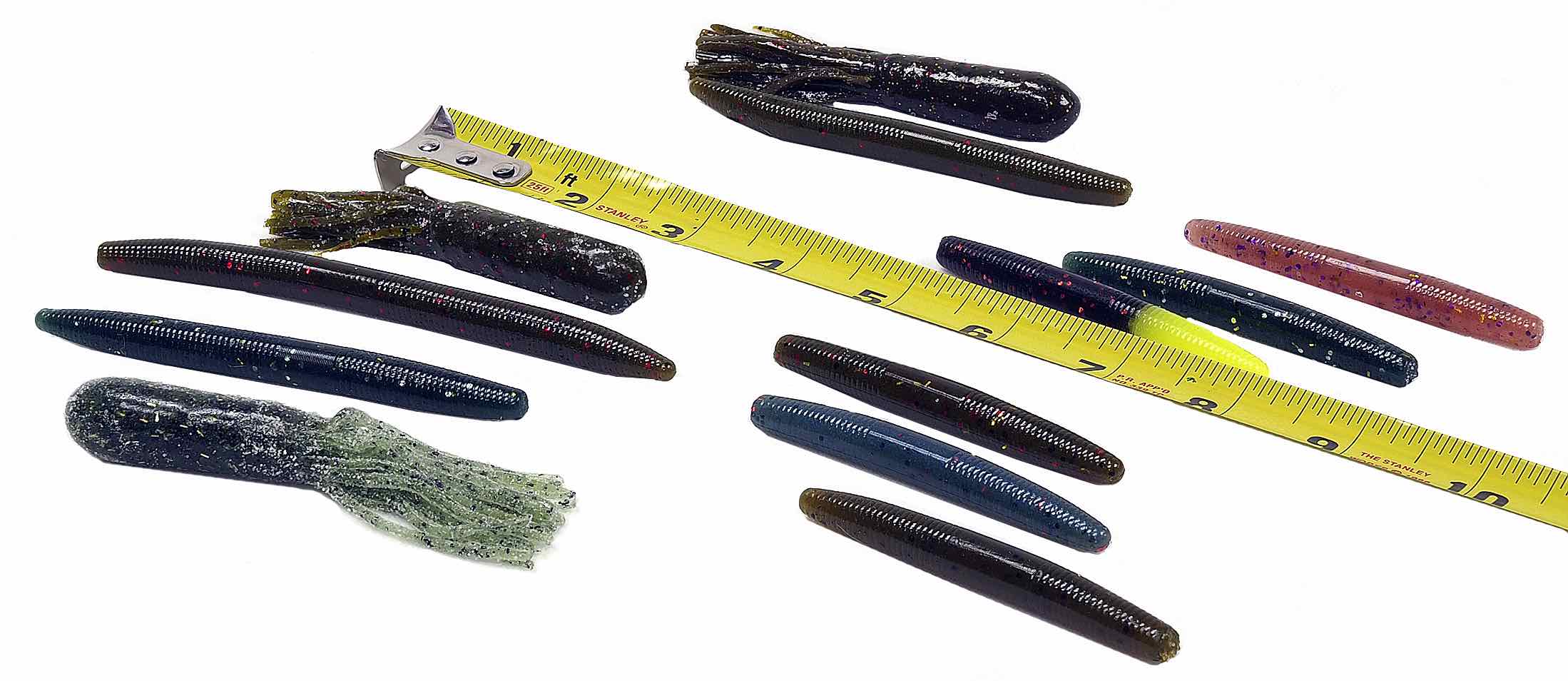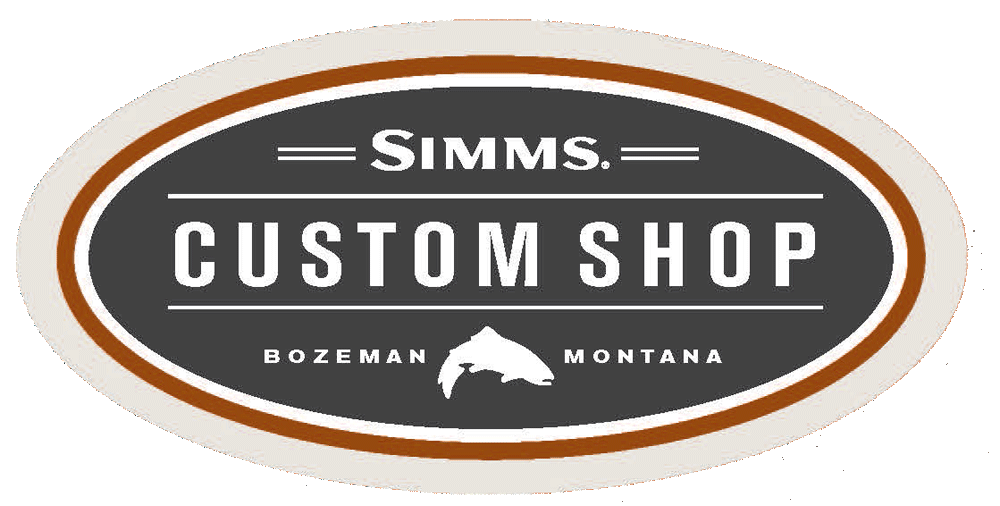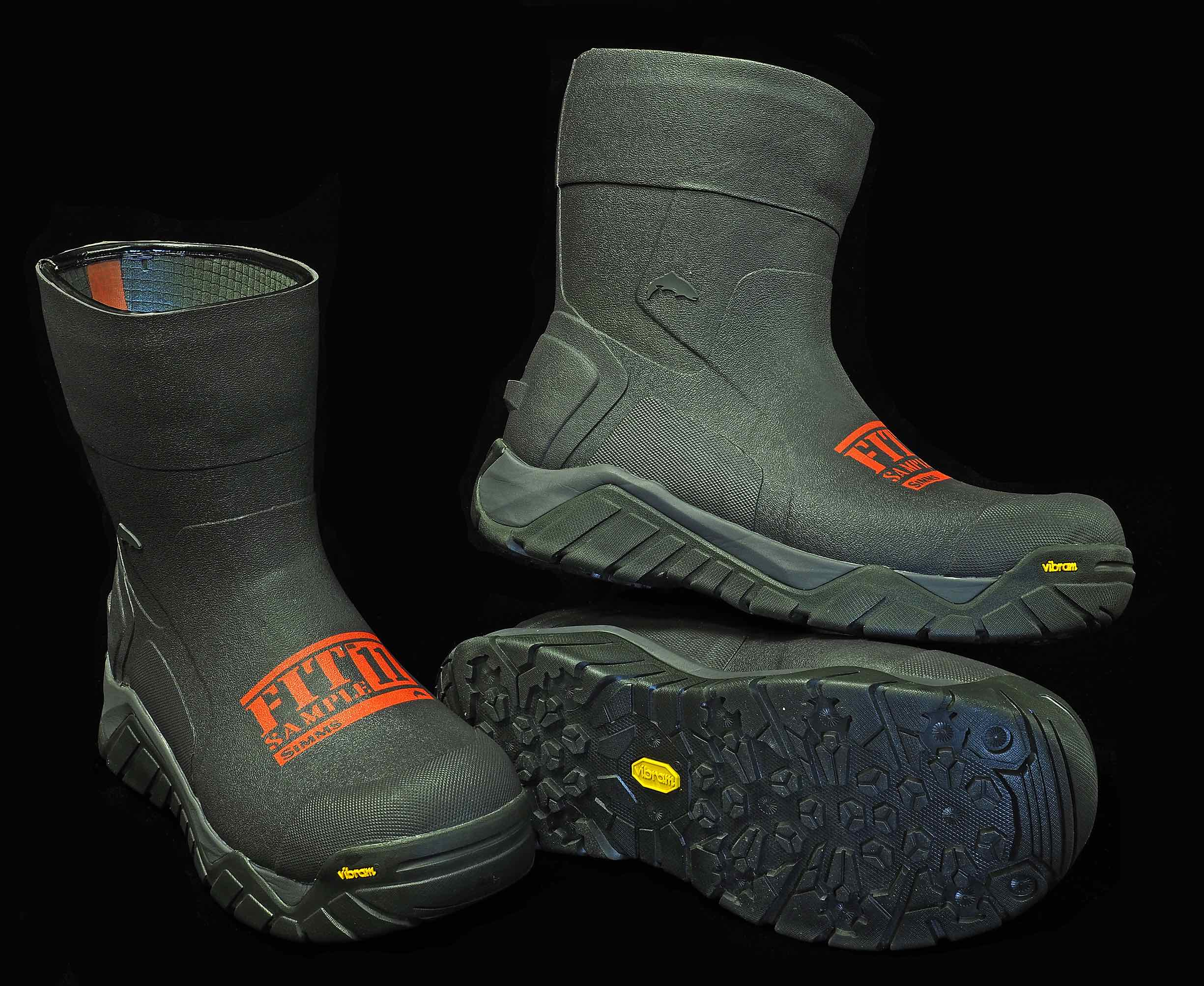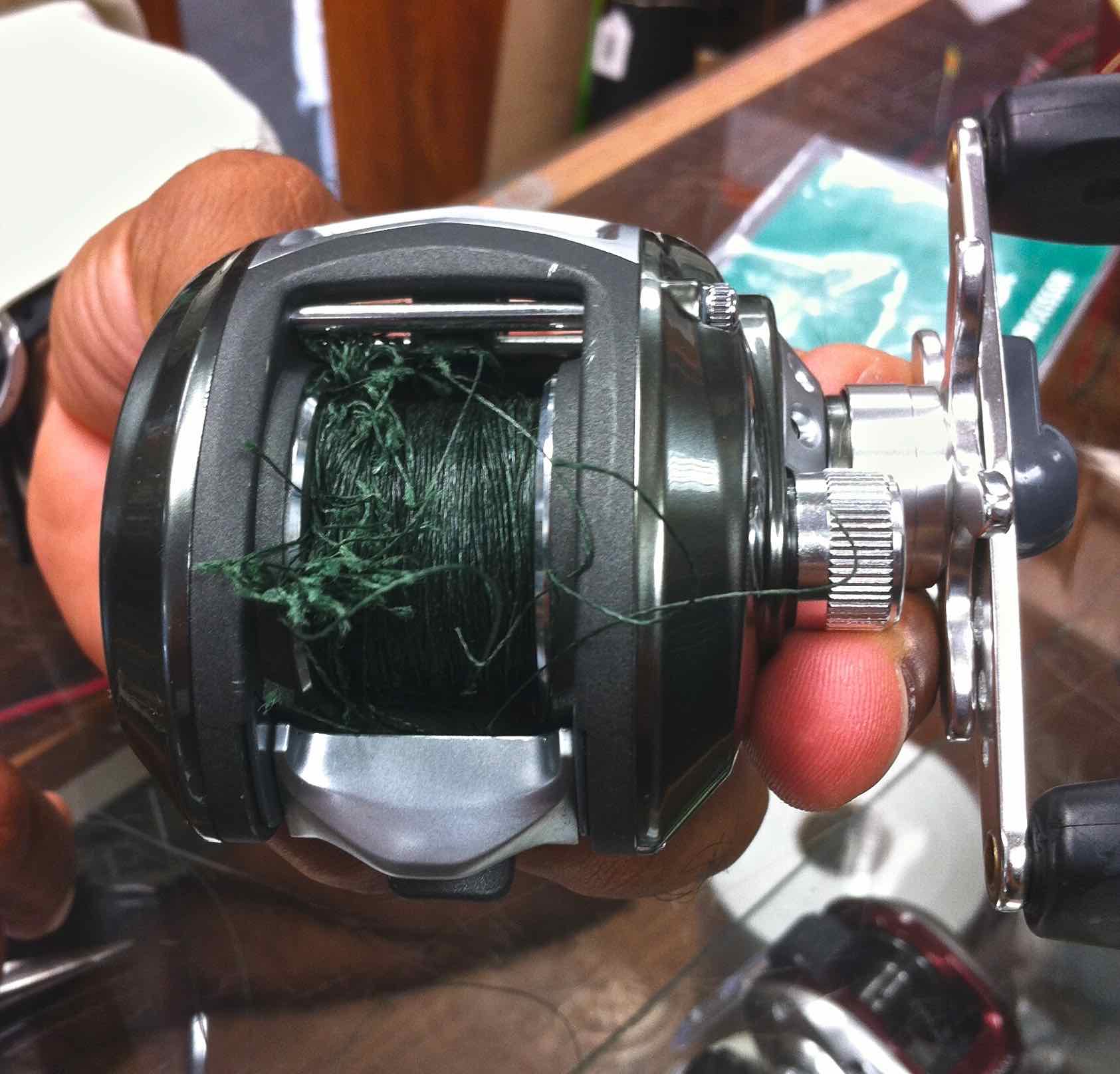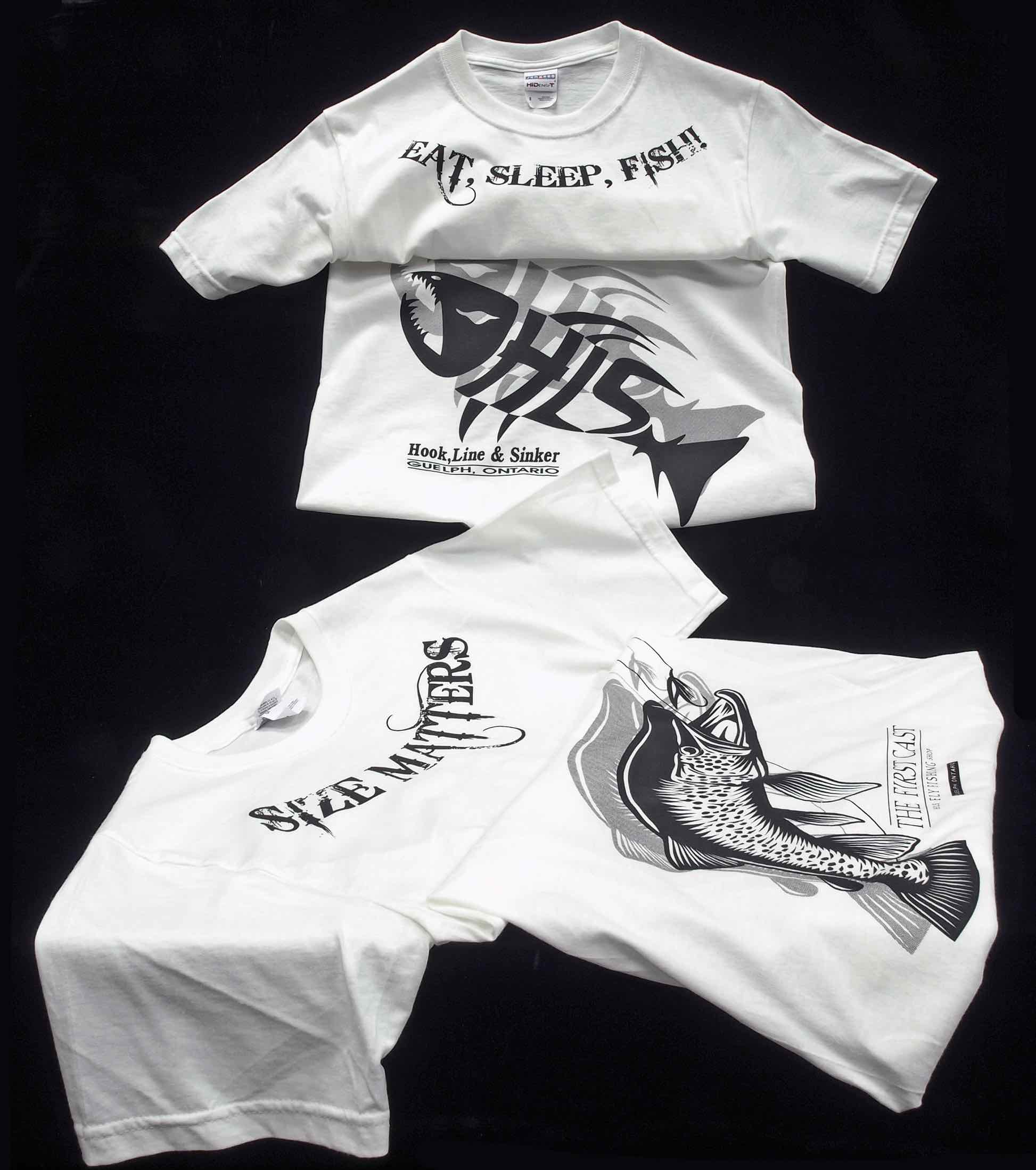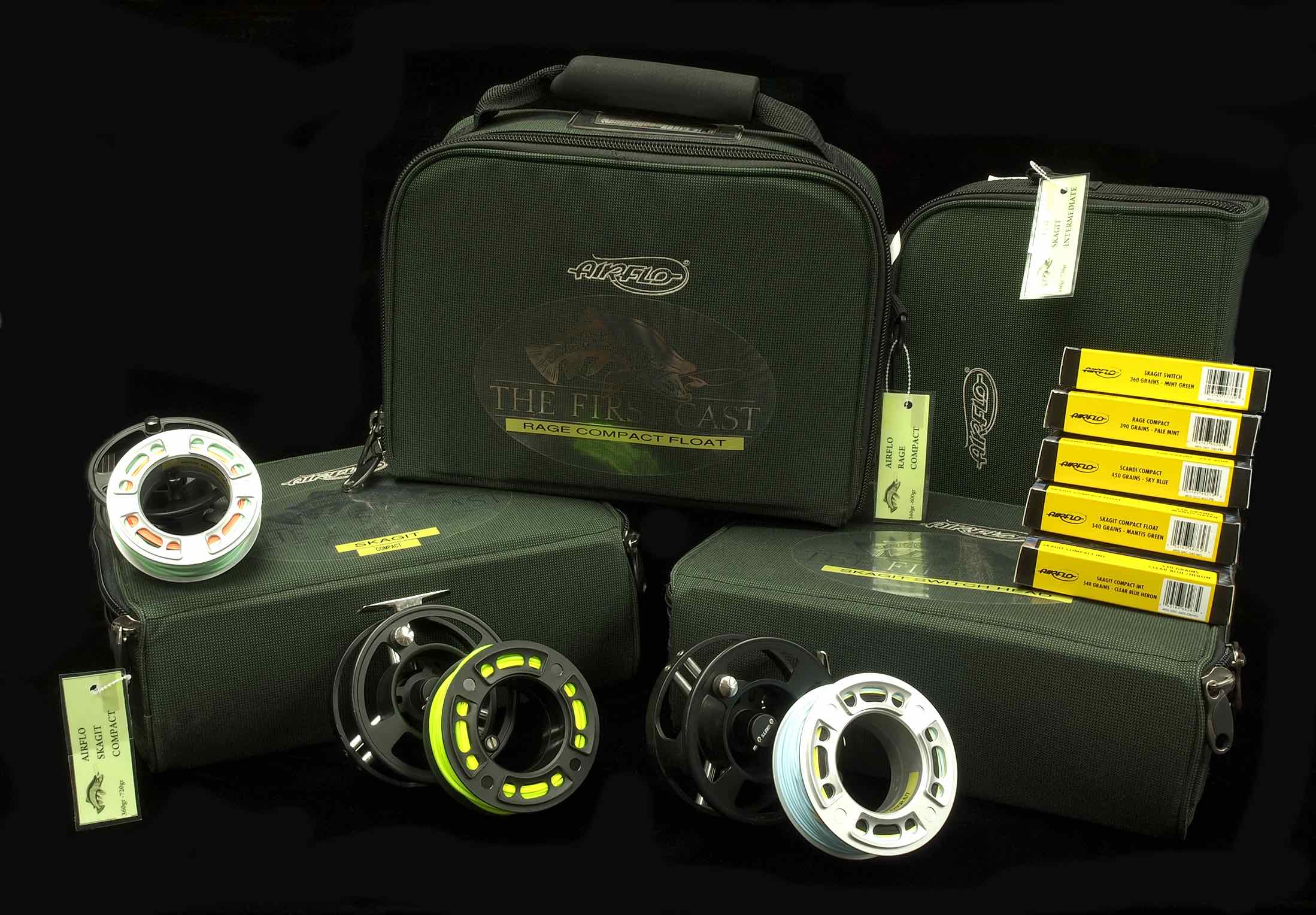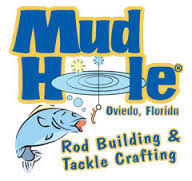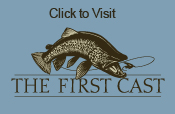The Atlantic Salmon (Salmo Salar) is a salmon in the family Salmonidae. It is found in the northern Atlantic Ocean, in rivers that flow into the north Atlantic and, due to human introduction, in the north Pacific.
Other names used to reference Atlantic salmon are: bay salmon, black salmon, caplin-scull salmon, Sebago salmon, silver salmon, fiddler, or outside salmon. At different points in their maturation and life cycle, they are known as parr, smolt, grilse, grilt, kelt, slink, and spring salmon. Atlantic Salmon that do not journey to sea, usually because of past human interference, are known as landlocked salmon or Ouananiche.
The species is the longest and heaviest in genus Salmo. After two years at sea, the fish average 71 to 76 cm (28 to 30 in) in length and 3.6 to 5.4 kg (7.9 to 11.9 lb) in weight. But specimens can be much larger. An Atlantic Salmon netted in 1960 in Scotland, in the estuary of the river Hope, was weighed in at 49.44 kg (109.0 lb), while another netted in 1925 in Norway measured 160.65 cm (63.25 in) in length.
The colouration of young Atlantic Salmon does not resemble the adult stage. While they live in fresh water, they have blue and red spots. At maturity, they take on a silver-blue sheen. The easiest way of identifying them an adult is by the black spots predominantly above the lateral line, though the caudal fin is usually unspotted. When they reproduce, males take on a slight green or red colouration. The salmon has a fusiform body, and well-developed teeth. All fins, save the adipose, are bordered with black.
Distribution and Habitat:
Ocean migration of Atlantic Salmon from the Connecticut River.
The distribution of Atlantic Salmon depends on water temperature. Due to climate change, some of the species’ southern populations, in Spain and other warm countries, are growing smaller and are expected to be extirpated soon. Before human influence, the natural breeding grounds of Atlantic salmon were rivers in Europe and the eastern coast of North America. When North America was settled by Europeans, eggs were brought on trains to the west coast and introduced into the rivers there. Other attempts to bring Atlantic salmon to new settlements were made; e.g. New Zealand. But since there are no suitable ocean currents on New Zealand, most of these introductions failed. There is at least one landlocked population of Atlantic salmon on New Zealand, where the fish never go out to sea.
Young Atlantic Salmon spend one to four years in their natal river. When they are large enough (c. 15 centimetres (5.9 in)), they smoltify, changing camouflage from stream-adapted with large, gray spots to sea-adapted with shiny sides. They also undergo some endocrinological changes to adapt to osmotic differences between fresh water and seawater habitat. When smoltification is complete, the parr (young fish) now begin to swim with the current instead of against it. With this behavioral change, the fish are now referred to as smolt. When the smolt reach the sea, they follow sea surface currents and feed on plankton or fry from other fish species such as herring. During their time at sea, they can sense the change in the Earth magnetic field through iron in their lateral line.
When they have had a year of good growth, they will move to the sea surface currents that transport them back to their natal river. It is a major misconception that salmon swim thousands of kilometers at sea; instead they surf through sea surface currents. When they reach their natal river they find it by smell; only 5% of Atlantic salmon go up the wrong river. Thus, the habitat of Atlantic salmon is the river where they are born and the sea surface currents that are connected to that river in a circular path.
Wild Atlantic Salmon disappeared from many rivers during the twentieth century due to overfishing and habitat change. By 2000 the numbers of Atlantic salmon had dropped to critically low levels.
Behaviour:
Fry and parr have been said to be territorial, but evidence showing them to guard territories is inconclusive. While they may occasionally be aggressive towards each other, the social hierarchy is still unclear. Many have been found to school, especially when leaving the estuary.
Adult Atlantic Salmon are considered much more aggressive than other salmon, and are more likely to attack other fish than others. A matter of concern is where they have become an invasive threat, attacking native salmon, such as Chinook salmon and coho salmon.
Life Stages:
Most Atlantic salmon follow an anadromous fish migration pattern, in that they undergo their greatest feeding and growth in saltwater; however, adults return to spawn in native freshwater streams where the eggs hatch and juveniles grow through several distinct stages.
Atlantic Salmon do not require saltwater.
Numerous examples of fully freshwater (i.e., “landlocked”) populations of the species exist throughout the Northern Hemisphere.
In North America, the landlocked strains are frequently known as ouananiche.
Freshwater phase:
The freshwater phases of Atlantic Salmon vary between one and eight years, according to river location.
While the young in southern rivers, such as those to the English Channel, are only one year old when they leave, those further north, such as in Scottish rivers, can be over four years old, and in Ungava Bay, northern Quebec, smolts as old as eight years have been encountered.The average age correlates to temperature exceeding 7 °C (45 °F).
The first phase is the alevin stage, when the fish stay in the breeding ground and use the remaining nutrients in their yolk sacs.
During this developmental stage, their young gills develop and they become active hunters.
Next is the fry stage, where the fish grow and subsequently leave the breeding ground in search of food. During this time, they move to areas with higher prey concentration.
The final freshwater stage is when they develop into parr, in which they prepare for the trek to the Atlantic Ocean.
During these times, the Atlantic Salmon are very susceptible to predation.
Nearly 40% are eaten by trout alone. Other predators include other fish and birds.
Saltwater phases:
When parr develop into smolt, they begin the trip to the ocean, which predominantly happens between March and June. Migration allows acclimation to the changing salinity. Once ready, young smolt leave, preferring an ebb tide.
Having left their natal streams, they experience a period of rapid growth during the one to four years they live in the ocean. Typically, Atlantic salmon migrate from their home streams to an area on the continental plate off West Greenland. During this time, they face predation from humans, seals, Greenland sharks, skate, cod, and halibut. Some dolphins have been noticed playing with dead salmon, but it is still unclear whether they consume them.
Once large enough, Atlantic Salmon change into the grilse phase, when they become ready to return to the same freshwater tributary they departed from as smolts. After returning to their natal streams, the salmon will cease eating altogether prior to spawning. Although largely unknown, odor – the exact chemical signature of that stream – may play an important role in how salmon return to the area where they hatched. Once heavier than about 250 g, the fish no longer become prey for birds and many fish, although seals do prey upon them. Grey and common seals commonly eat Atlantic salmon. Survivability to this stage has been estimated at between 14 and 53%.
We are the leading provider of Fly Fishing Lessons, Corporate Team Building, and Guiding on the Upper Grand River, the Upper Credit River, and the Conestogo River.
No Guelph, Fergus, Kitchener or Cambridge Fishing Tackle Retailer will boast as complete and diverse a store inventory, including a vast selection of Centerpin / Float Fishing Reels, Rods, Clothing and Accessories.
Order a HLS or TFC Gift Card – We will put one in the mail for FREE!
Fly Shop Flyshop Flyfish Grand River Fly fish Grand River Guide Grand River Lesson Grand River Fergus Ontario Canada

